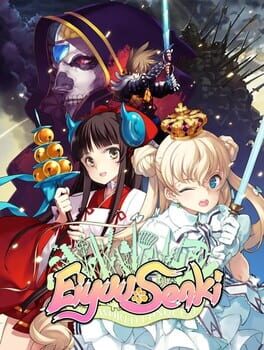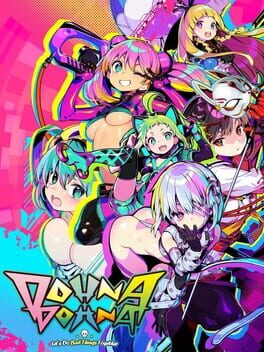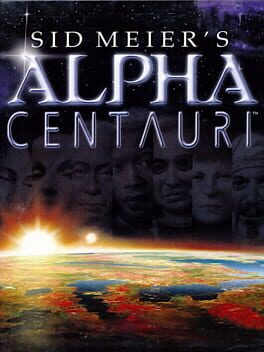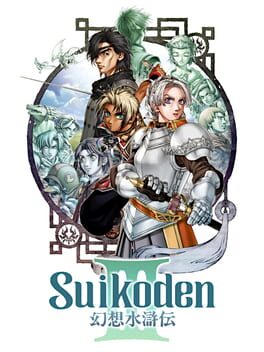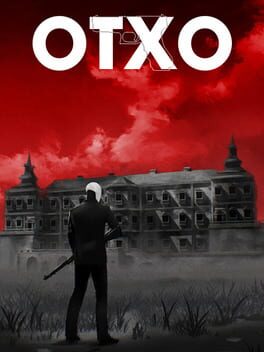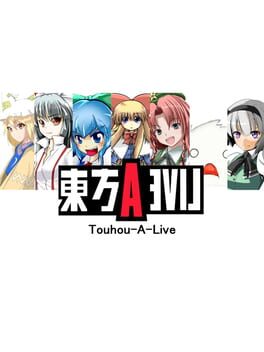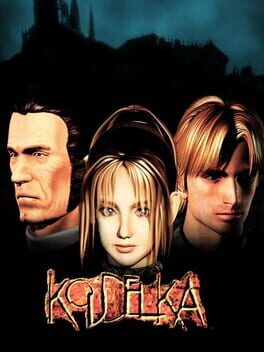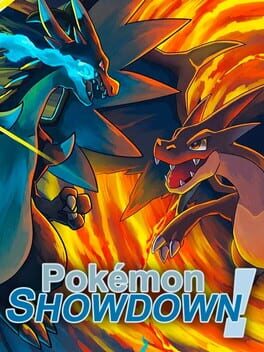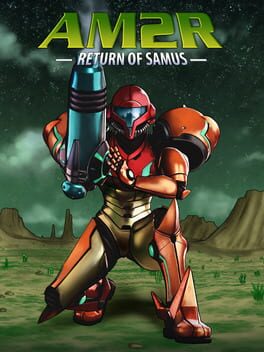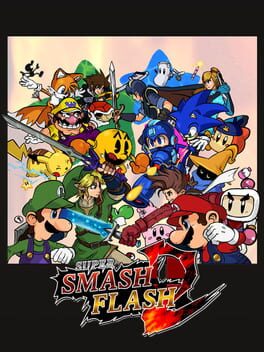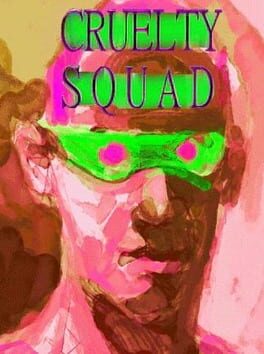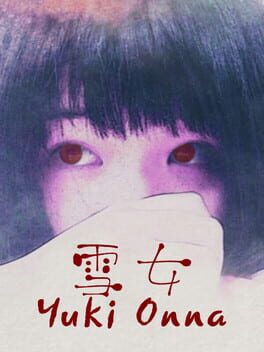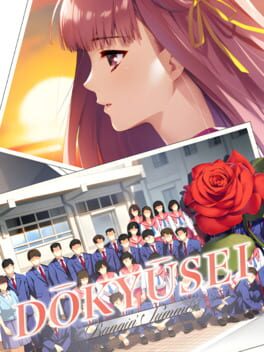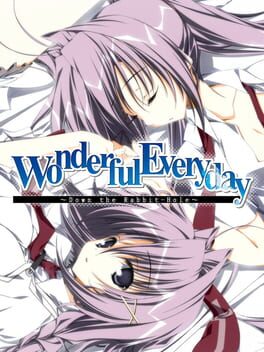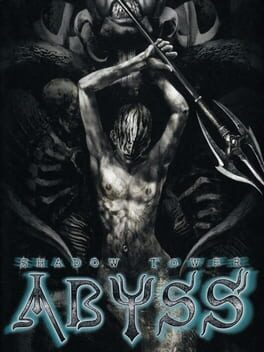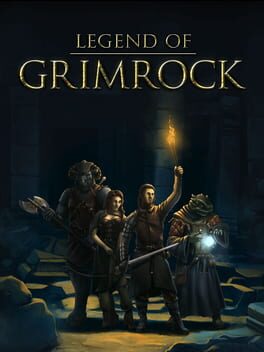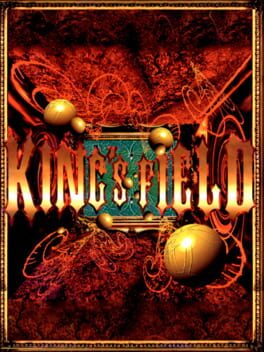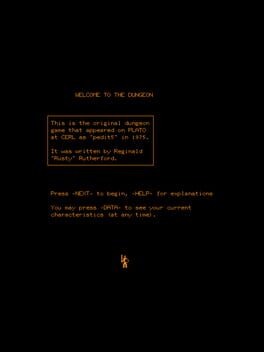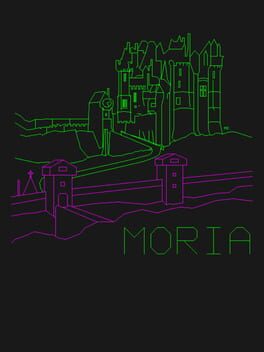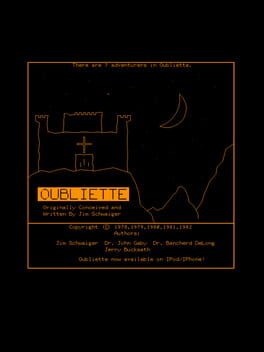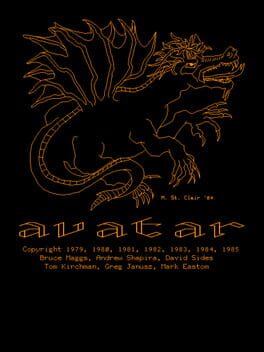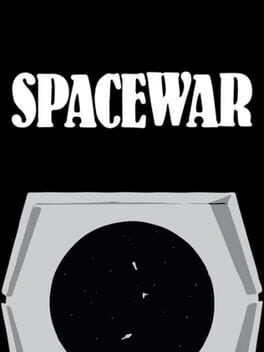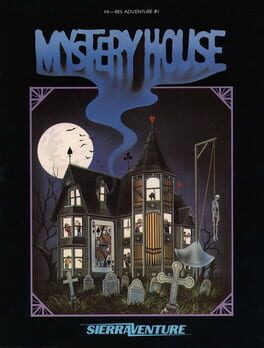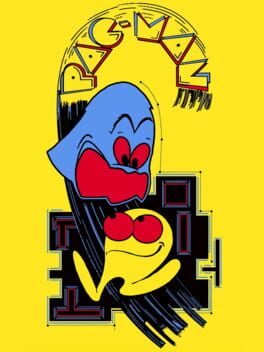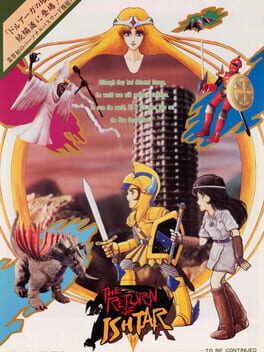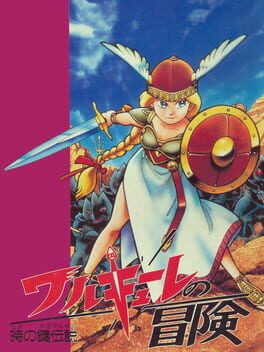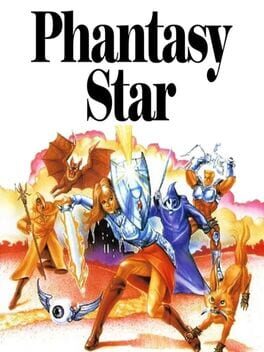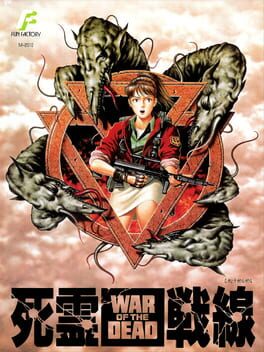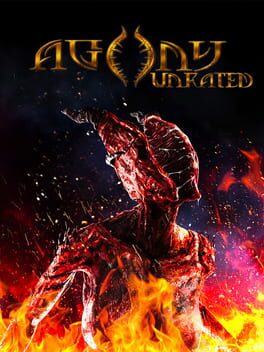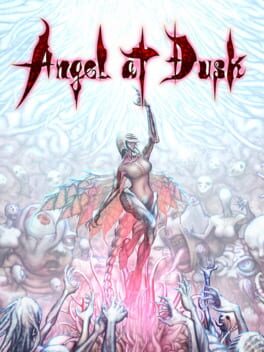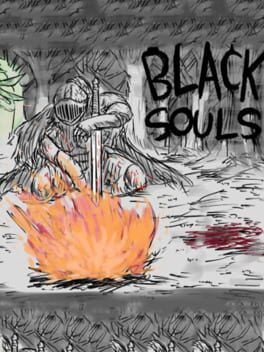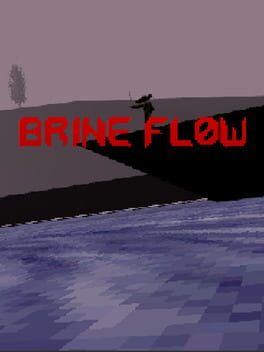Comrade_Oily
9 reviews liked by Comrade_Oily
Rance it is not. It is unfair to bring up similar titles when discussing a game own merits but this one tried way too hard to be Rance to ignore its haughtiness.
Eiyuu Senki - the World Conquest is a turn-based strategy RPG visual novel type of game, a genre mixture of which many examples exist in Japan but it is still abundantly rare in the west. The Rance series has long been the most famous example in the western niche interested in this kind of games, but it is important to understand how influential this name has been for over 30 years in Japan and realize how many similar titles have been developed with mixed results.
Some like the Eushully games have tried to revamp the strategy RPG aspects of the games, other like Utawarerumono tried to focus on the narrative. Others like Koihime Musou and Eiyuu Senki just tried to the same exact thing without the distinctive gameplay, narrative or charisma of the aforementioned games. If the Steam version allowed to utilize the 18+ content of the game – and, in some way, it does, – I would say that this is just a costly masturbation simulator, with some boring cutscenes between erotic scenes. Since, at least on the paper, the players are supposed to enjoy the gameplay and the story, do they have any interesting feature to make worth the experience?
No, they do not.
The gameplay is so bare and pointless, there is no challenge or strategy involved in just clicking enemies and letting your overpowered heroes win the game, heroes you obtain since the start. There are some upgrades if you also want to make it easier, for some reason, but even if you beat all the main and side missions all you are treated to are unimpressive vignettes of banter between uninteresting characters. The protagonist is a blank slate for the players immersion but he hasn’t any substantial, role-defining choice to make him fit the role of the players’ avatar, the plot will stay the same no matter how you imagine him to sound and feel because he acts the same regardless. The heroines, which are supposed to be the meat of the game, are nicely drawn and colourful but they too lack any interesting personality or trait, the event in which they are protagonists are uneventful at best and trite at worst; each of them will sound the same after a certain point, so despite having different traits they hold the same unimportance to the game.
Eiyuu Senki is a game for those who will take absolutely everything as long as it is from Japan, is an eroge or in general just has a decent character design for its heroines. Those seeking something worth investing time and attention, as a video game experience, won’t find anything here.
Eiyuu Senki - the World Conquest is a turn-based strategy RPG visual novel type of game, a genre mixture of which many examples exist in Japan but it is still abundantly rare in the west. The Rance series has long been the most famous example in the western niche interested in this kind of games, but it is important to understand how influential this name has been for over 30 years in Japan and realize how many similar titles have been developed with mixed results.
Some like the Eushully games have tried to revamp the strategy RPG aspects of the games, other like Utawarerumono tried to focus on the narrative. Others like Koihime Musou and Eiyuu Senki just tried to the same exact thing without the distinctive gameplay, narrative or charisma of the aforementioned games. If the Steam version allowed to utilize the 18+ content of the game – and, in some way, it does, – I would say that this is just a costly masturbation simulator, with some boring cutscenes between erotic scenes. Since, at least on the paper, the players are supposed to enjoy the gameplay and the story, do they have any interesting feature to make worth the experience?
No, they do not.
The gameplay is so bare and pointless, there is no challenge or strategy involved in just clicking enemies and letting your overpowered heroes win the game, heroes you obtain since the start. There are some upgrades if you also want to make it easier, for some reason, but even if you beat all the main and side missions all you are treated to are unimpressive vignettes of banter between uninteresting characters. The protagonist is a blank slate for the players immersion but he hasn’t any substantial, role-defining choice to make him fit the role of the players’ avatar, the plot will stay the same no matter how you imagine him to sound and feel because he acts the same regardless. The heroines, which are supposed to be the meat of the game, are nicely drawn and colourful but they too lack any interesting personality or trait, the event in which they are protagonists are uneventful at best and trite at worst; each of them will sound the same after a certain point, so despite having different traits they hold the same unimportance to the game.
Eiyuu Senki is a game for those who will take absolutely everything as long as it is from Japan, is an eroge or in general just has a decent character design for its heroines. Those seeking something worth investing time and attention, as a video game experience, won’t find anything here.
Dohna Dohna : A Colorful Ethical Paradox
AliceSoft is a company which always found itself in an interesting paradoxical crossroad when it comes to tackling heavy subject matter and putting it under the lens of morality. Being a eroge company and not the kind to half-ass the erotic side of their production like most Eroge seems to do out of convention (and for the most part to sell to a niche audience while bypassing censorship on more touchy subject matters) but embracing that aspect as part of their core identity puts them under a pretty unflattering light in the eyes of the general public. But AliceSoft being enjoyed mostly by a niche community of people on which its western side is the size of a small Italian mountain village means there’s not really any further or widespread discussions about the company and their works even within the fringe community of “Visual Novel fans” (I don’t like the etiquette but this is off-topic).
Usually the conversation ends as soon as it starts : AliceSoft is a porn game company, they make porn games for weirdoe otakus to jack-off to. And while we could end the discussion there, trying to be reasonable and actually explain why AliceSoft titles are more than the sum of is part is like explaining that there’s a difference between pedophilia and ephebophilia, like it exists, but it’s really hard to explain the subtle difference without sounding like a pedophile yourself and in the case of Alicesoft without sounding like a porn addicted weirdoe (which I absolutely am btw… anyway where was I ?).
And this is where yours truly chooses to bite the bullet and actually defend the idea that while being a porn game company, AliceSoft's entire existence is fascinatingly paradoxical. On one hand, Alicesoft is an eroge company and one that owns the mantle and wears it with pride, the people working at Alicesoft define themselves as “eroge makers” which can even be found on their logo and it’s not like they’re shy about it. In fact, Alicesoft has always been very transparent about their main goal when making these games : They love eroge and they want to make eroge and thus they put a sisyphean amount of effort into delivering on the erotic front, not because they wanted to sell to a niche market, not because they want to be edgy but because they genuinely enjoy and have a clear passions for the act of drawing naked women doing the deeds and then contextualize them within a thinly veiled plot with characters and complex gameplay systems to accompany said drawings.
Just one look at the Alice Mansion which is this super cool Dev Room feature present in almost every single of their titles will show you how transparent they are about that fact. They are a bunch of goofy hornballs that likes to make goofy lewd shit to please a crowd of people already averted to that type of writing or find an appeal in eroticism and pornography. Porn artists at the end of the day are still artists, they vibe with different shit, they bond over their weird quirky love for superficial details like girls in glasses and the “moe” side of their misery, there’s a lot of thought that’s put behind these elements and it’s impossible to remove that aspect of their catalog because it would just result in a different somewhat truncated experience.
So you think that something like this can only approached through an ironic lens and appreciated only by complete sociopath especially since a lot of the fetishes displayed in those games ranges from pretty extreme to downright criminal (may I remind the RanSill audience that our boy Rance isn’t an UWU soft boy but an honest to god criminal AND a rapist ?) but if it was that simple of course, the company wouldn’t have any sort of following.
Because on the other hand, Alicesoft also wants to tell good stories and more times than not, stories which actually challenge the view and the morals of the people they are trying to cater to. Being founded in the 80’s where most erotic game developers were making a quick bucks selling cheap strip poker, mahjong, shifumi or quizz games without much thought behind it, they wanted from the outset to create interesting scenarios, worlds and characters to contextualize the action. Suffice to say that in my opinion it serves the purpose of rendering the erotic situations even hotter, goofier and/or horrifying depending on what the games are aiming for and help them make more memorable in the long run because you end up having something to attach yourself to beyond the typical plumbers and stepmom scenarios.
And while that’s fine and all, I don’t think this exaggerated attention to detail and care alone would’ve made people stuck with series like Rance or their other less popular productions and they would’ve most likely died to the general indifference of many. As soon as Rance 1, the game present Rance as an awful criminal that you don’t and should not relate to or sympathize with in any capacity but that doesn’t change that he is the hero and he has to face adversaries and he alone isn’t what’s wrong with the world at large and that if people like Rance are able to exist and succeed within such a setting it’s mostly because of deeper problem with the way the world around him works, which in Rance 1 is portrayed by Lavender, the ghost of a girl who was killed by Lia, the princess of the Leazas Kingdom to quench her twisted desires and which Rance promptly punishes in his huh… own kind of way.
Very early on, AliceSoft was already toying the line between indulgence and the criticism of certain moral failings that may lead people to sincerely engage and create this type of content in the first place. Toushin Toushi 2 all the way back in 1994 did the whole “Sans Undertale judging you for your sins'' thing a lil bit more than 20 years before it was cool by including within its game mechanics a morality system which affected certain parameters in your games as well as changing the outcome of some scenes with a very obtuse way of absolving your sins if you so desired.
It’s a game where the protagonist is very different from Rance or even Kuma the character we’ll focus about in a bit, he’s a dude with a girlfriend who sadly finds himself in a pretty shitty situation regarding her well-being and his own deeper desire to progress that relationship to the next level followed by a second half so brilliant and so thought provoking that I really don’t want to spoil it for you or analyze it in details here (maybe some other day ?). Suffice to say that a morality system works with the type of story TT2 wants to tell but the nature of the game being an eroge and thus feeling the need to cater to an audience who genuinely enjoys and likes that type of content is a bit of an awkward position to find yourselves in.
Mind you, I think part of the reason this came to come through for the most part is because Alicesoft is pretty mixed in terms of gender ratio within the company, and a lot of the hard hitting and brutal scenes from these games were written by a female writer by the name of Torii who did her damn best to add her personal female leaning vision in the core DNA of these burly sex stories mostly consumed by a male audience, to the point that the modern western Rance fandom is surprisingly left-leaning and feminist at their core because they could pick apart the more subtle thinly veiled themes that these games had to offer.
In fact, when Torii doesn’t work on a game, you can instantly feel it in the level of indulgence and a lack of subtlety in regards to thing she had previously installed like that cynical biting edge that comes through when shouting into the void that the world is complex and the winds of change can come from the most unlikely and at times unlikable people. I’ve already talked about this in my review on Rance IX if you care enough to check it and give you a proper idea of what I think Rance under a new author might look and sound like (spoiler : I’m mixed on a lot of narrative choices in that game despite enjoying it in the end) but that’s not why I wrote this lengthy introduction.
I wanted to show you that deeply, Alicesoft never forgot about consequences, they may be fetishizing stuff like sexual assault and everything but it’s only a filter through which they can tell stories about the deeper implications of said actions and the multiple consequences that can be born from them and how people explore their own insecurities about sex while still keeping a mostly fun and lighthearted tone to disorientated the distracted players. Kichikuou Rance, one of their most popular and widely acclaimed titles is a game entirely built on a push and pull gameplay loop based on facing the consequences of your actions, making tough decisions and having to adapt to them and accept them as they come. And while a lot of this was lost after Torii’s departure from the company, I believe one writer took the mantle of what she once wanted to accomplish with her works, and that writer is known as Dice Korogashi.
Dice Korogashi was part of a newly formed team of developers at Alicesoft that I will now refer to as “Team Dohna” for the sake of simplicity. When the question of remaking Rance 01 for a modern audience was brought up by TADA who initially wasn’t fond of the idea. He thought that if it had to happen it should be done under the same condition the original game was made in : by a fresh team of young developers, a risky bet for what will eventually become the newest best entry point into the series but a bet that paid off significantly in the end, since Rance 01 is considered by many as one of the best titles in the series and the other remake they worked on, Rance 03 saw even more praise by the general public which faith were starting to dwindle during the few dry years of the company after the release of Sengoku Rance.
Dice and team Dohna perfectly captured the feeling of the franchise and what made it work in the first place, and with a material as shallow and honestly not that great as Rance 1 they managed to pull a lot of its best quality while reinventing the game for a new audience, coupled with a lot of retroactive continuity stuff, a more fleshed out adventure and generally better more witty writing which reminded people of the good days where Torii was at the office.
It is no surprise then than Dice was brought onto Rance X to take the role of main writer replacing Yoroide Dragon who only served a minor co-writing role this time around, the guy understood his stuff and Team Dohna were perhaps even more passionate and talented than their mentors when it came to making fun games which pleased a grand majority of people.
Soon, Team Dohna will start working on their own original IP, a game that will shake the world with a stunning artstyle and a level of presentation never seen before for the company.
Is it all style and no substance ? Or is there more to it ? Let’s see for ourselves.
Dohna Dohna was originally announced in 2016 and went onto a long development period of 4 years after its announcement after the scope and technical aspect of the project found itself to be too big for Alicesoft and Team Dohna to handle in a timely manner especially with the addition of guest artist joining the fray to design all of the unique heroines of the game and of course COVID, anyway the game was eventually released in 2020 to celebrate 1 year too late the 30th anniversary of the company. It wasn’t director Ittenchiroku first title within the universe as there exist a sort of prototype of Dohna Dohna called Haruurare which was a small mini-game in the Alice 2010 compilation, although no english version of it is available, the main premise is roughly similar with an heavy emphasis on kidnapping and forcing girls into prostitution which is what Dohna Dohna is mostly (but not entirely, we’ll get there) about.
The game takes place in the fictitious Asougi City, a modern Japanese metropole controlled by a big corporate conglomerate called “Asougi” who managed to claim its independence from the rest of world and establish a sort of cult of personality fascist regime with all the bells and whistles that come along with it such an heavily armed police force, propaganda everywhere, surveillance, “cleaning” drones and forced labor for anyone who steps too out of line with the system in place. To oppose the oppressive regime a couple of gangs whose goal is to trample on the establishment were founded, these gangs known as “Anti-Asou” clan engage in illegal activities such as property damage, stealing but most importantly the dangerous business of “hustling” which can be roughly translated by the act of kidnapping innocent women and selling their bodies to illegal prostitution.
You take control of Kuma, member of an anti-Aso clan by the name of “Nayuta” and the one managing the hustling business. he’s accompanied by other members such as Zappa the clan’s leader, Torataro the milf enjoyer, KiraKira your chainsaw wielding gyaru childhood friend, Porno the hypersexual loli and a slew of colorful characters joining the party as you progress through the game. Your goal on top of following the story is going to go inside various dungeons in order to “hunt” for potential new “talents” , bring them to your hideout and “train” them to perform well and bring you lots of cash during the “hustling” hours.
Let’s get something out of the way first before going in detail about this very peculiar premise. The game is absolutely drop-dead gorgeous, it’s something that many people, even those of the mainstream gaming sphere who don't know about the concept behind the game have said. I would go as far as to say that out of all of Alicesoft’s 30 year old catalog of great games, this one easily has the best presentation of them all. Alicesoft being an eroge company means that they are of a relatively humble size and their games are relatively low budget compared to even low-profile indie games and thus are mostly carried by their sprite art and CG’s as it is tradition in that field. But here the game is just fucking popping, the illustrator Gyokai did more than an amazing job giving life to this game, the colours are flashy in a certain pop-way, the character design are ultra solid and most of all, the game has actual battle animation and those wouldn’t have to envy those of productions commonly found on Steam.
Many people say that Dohna Dohna feels like the “Persona 5” of Eroge and from an aesthetic perspective, it’s hard to deny, everything is so fluid, the UI is really nice, it feels like a proper professional game release and is far above the standards of these kinds of production, as far as the art go, the game is freaking gorgeous and I personally love it ! Even the H-Scenes are… well not to be a gooner but the art pops even in those.
One quick look at the Alice Mansion section of the game informs us that the team went for this sort of Hip-Hop, World End With You artstyle because they felt that telling a story in a modern city would make the visuals of the game rather dull and they wanted to contrast with the heavier subject matter of the game and that was a more than excellent choice, in fact I would even dare to say that some of the more… let’s say harsher and hardcore scene wouldn’t work nearly as well with an artstyle less detailed and with less flair, I gotta admit that I rarely praise H-Scenes but some of the H-Scenes in this game really made me stop to take care of important business if you know what I’m saying.
When I said earlier that the game was considered to be the “Persona 5” of Eroge, I also meant it a bit more literally as a lot of the main criticism people have towards the game because of this poppy artstyle combined to quite a dark premise meant the game was supposedly all style and no substance, that it’s just a fun game with fun mechanics and that the stories failed at delivering any thoughtful deeper commentary about the subject matter it was trying to tackle, I must admit, that was a bit of my impression at first. Like I said, it’s really hard to release an Eroge who very obviously indulges in some crass stuff while trying to sell and please to an audience of jerkers who are only there to appreciate the “art” and the game general tone didn’t really indicate at first that the story was going to take that whole “hustling” thing all that seriously and put it as an excuse to be primordially fun first and a bit needlessly edgy second. I was actually wary about this throughout my playthrough but then I remember that the person who recommended this game to me had a lot to say positively about the game’s handling of said topic and the deeper political themes the game tries to explore.
But to talk about these, we first need to understand how the game works. The game is divided in multiple phases, you have a hideout phase where you can buy items, manage your party, participate in character events to further your relationship with your party members and manage your “talents” (more on that later). After that, you have two choices, either spend the day “hustling” which will trigger the Hustling phase of the game or go on a “hunt” which initiates the Hunting Phase of the game AKA Dungeon exploration. We’ll focus on the hunting phases first as it is the more “video gamey” aspect of the game.
After selecting a dungeon, you move your characters on a series of linear branching paths which sometimes leads to an icon triggering a fight, giving you an item or triggering an event. The battle system of the game is actually pretty fun, it’s a less hardcore version of “Darkest Dungeon”, if you ever played that game, your characters and the opposite party are placed in a round of 4 and you have to slide them left or right before using their abilities, you have to consider placement because some of your abilities only work within a certain radius or only hit a certain row (which can be seen by a line connecting to where the attack will land) and also to avoid damages yourself, as some of the more fragile units could potentially get killed easily if they’re misplaced. While Dohna Dohna, doesn’t really have the same level of complexity of Darkest Dungeons with its permadeath system and various amounts of status effects (here most of them are just stats debuffs), it does have a few “puzzle” fights when it comes to recruiting talents ! Sometimes when on the field, you’ll hit a case with a girl icon, this triggers a fight with a talent on it and if you want to recruit it, you will need to defeat that girl last and so you need to time and use your techniques right as to clear all enemies before dealing with the talent who always die in one hit ! It’s a nice change of pace on top of the bosses which are also pretty damn fun and well designed.
The game’s difficulty on a first playthrough is “just right” and the character variety of your party is pretty damn solid, it’s also nice that you can swap party members at any time in battle and an unlimited amount of time to as to keep the general flow of battle intact and not punish the players too much for harsh decisions. Fights are usually not all that hard but there were some that took me by surprises with how challenging they were, combined with the entire resource management aspect of dungeon exploration. I have a few complaints with the game's systems however : for one, only the active party members at the end of a battle get any XP which is pretty annoying to keep everyone evenly leveled by the end of the game and two the enemy variety isn’t super high. I understand this was done because animating hand drawn sprites for every characters probably was already a huge time commitment as is but It wouldn’t have killed to at least have swap colored version with different aptitudes instead of just pulling from the same pool of generic soldier troopers with more HP for new zones, that’s no to say it’s always these types of enemies as some story dungeons switch things up when the other gangs are involved but still.
Another thing that I didn’t really enjoy was the weapon upgrade system, for some reasons, Alicesoft weapon systems have always been obtuse and RNG heavy for no reasons and Dohna Dohna is no exception. To get new gear, you need to first find the material and then buy it at the shop, problem is the game doesn’t tell you where to find these past Rank 2 and even if you figure it out somehow, you need to be lucky to be able to find said material in a dungeon during an hunting phase, it makes the endgame unnecessarily grindy if you want the most optimal gear to tackle the last few challenges of the game unless you want to spend a lifetime killing one tanky enemies in one of the late game areas while making sure they don’t send your ass to the shadow realm.
Speaking of buying items, the main means of collecting money in this game is through the “hustling” part which is where the game hides its true ludo-narrative experience. One thing that I’ve noticed when playing through the game is that this aspect of the game was pretty secondary, you need it to gain money and gain more resources but aside from the time the story requires it, the hustling is something almost entirely optional and even when you are forced to interact with it the requirement to progress to the next stage of the story is usually not that high.
At first, I thought this design decision was a bit odd. Why would the secondary mechanic of the game, arguably the one the marketing of the game was centered around and one of the main sources of inner conflict for our protagonist, be left being so optional ? The main answer one could arrive at is that much like the RPG aspect of the game, they wanted this part to not be too much of a weight on the players, especially the ones that were more familiar with RPG mechanics but not nearly enough with management simulators. After all, the Alice Mansion section of the game talks about how they wanted the game to remain easy and accessible in order to sell it to a larger audience as this big bright and colorful game celebrating 30 years of the company’s history.
But by actually investing myself deeper within that part of the game out of my own volition and also mostly so I could gather enough resources to mitigate the end-game grind, I think that I was understanding why they decided to do it this way as it says a lot about you the player and how you start naturally fitting in the shoes of the main character Kuma, experiencing a similar level of cold detachment as you invest more time in those mechanics.
Kuma is an interesting protagonist as far as the wider range of Alicesoft protagonist goes, unlike Rance he isn’t some lust and ego-driven asshole looking to dominate the screen time and the world while hiding his weaker side behind a veil of macho man behavior, unlike Seed from Toushin Toshi II, he isn’t an innocent constantly struggling with the morality of his actions and the vow he gave to his S.O. Kuma is a bit like Walter White from the Breaking Bad series, a man who after losing everything turns himself to a shady business and has grown colder and more indifferent in order to protect his own psyche from the harsh reality of the acts he’s committing. Kuma lost his family after they were used as experiments for Asougi which led him to a life of crime and joining the Nayuta clan. Nayuta, initially wasn’t fond of “hustling” as a business but Kuma began introducing it to the clan under the suggestion of “Mistress” a shop owner who gives out weapons and items to other clans around the city as “hustling” is shown to him to be the most optimal way to found Nayuta’s illegal and revolutionary activities.
Kuma sees hustling as just a means to an end, just something that he absolutely needs and has to do in order to avenge his family and further his goals within Nayuta. Kuma is a young man, still going to school during the events of the story even if his presence in class isn’t the most consistent, he even embarks his childhood friend KiraKira into that business which he probably didn’t want to do in the first place but much like anything in his life, dealing with a life of crime had terrible effects on his mind. Kuma being responsible for such a business had to grow distant and cold when dealing with “talents” and usually, he wants to deal with the hustling alone, not letting the other members of Nayuta handle that side of the clan activities and only focusing on the hunt. Of course, the other members interact with him throughout the course of the game, but they don’t really question him on that subject for more than a few seconds and it’s only when Kuma is gone from the team for a short while during the campaign that another member by the name of Joker takes the mantle temporarily and say something “well that was fucked up” and not much else.
As the story progresses, Kuma kinda loses himself in his job, leaving aside his humanity in order to perform well and grow the numbers even larger, he lost himself in the sauce and it’s not even sure that he could even escape from it, he’s not even sure of why he was doing in the first place and why he’s continuing. This is why the hustling part of the game is very light and not too player demanding in my opinion, just like Kuma, you can just treat it literally like a side-hustle that you need to participate in even a little bit to progress in the game but if you want to perform better, you need more money, you need more numbers, you need better talents, with better stats and thus any further implication within that side of the game is only greed from the players perpetuating the cycle of violence and cruelty for his gains.
In the game, you manage your talents through the uses of a tablet showing different stats like their looks (how likely they’ll get picked up by clients), their techniques (how much money they’ll bring) and their mental health stat which is akin to HP in other game and when that reaches zero, the talent “breaks” and thus cannot perform as well and is a wasted asset that you need to dispose of. Talents also comes with a series of attributes which give bonuses during hustling for example by giving a “sexy” talent to a client that demands it means you’ll get more money out of them but in return they can also add attributes to them some beneficial and some not like making them blind or disabled, these attributes have different effects on the talent stat growth and stat decrease every time they participate in sexual activities with mental health almost always systematically dropping down each time.
Of course in order to keep your talent in check, you can feed them different training items which increases their stats so they can either perform better and for longer, you also need to make sure they stay on the pill so they don’t end up getting pregnant which is about as bad as them being broken and making them discardable. It’s in this aspect that I found my mind was starting to look at these talents like just replaceable assets, things that you can just break and replace by the next talent with better stats and initially, the game actually encourages such a playstyle because it’s more efficient to discard your broken talent and replacing them with newer, better ones than keeping them for too long.
This is encouraged by something called the “Hustle Appreciation/Desperation Day” : while you can hustle at any point during your playthrough, it is preferable to keep your girls for these special day which give more money and dedicate the other days to hunting in dungeons and progressing the story. Desperation day in particular is pretty good for your wallet, as the clients give way more money per hustle but in exchange sadly are rougher with your talents which reduce your talents mental health to mush, faster than it took me to write this review and give them a lot of bad attributes !
Realizing the reality of this situation, I started trying to invest more in my talents mental health, showering them with goods to boost their moods and I realized that it was kind of harder to do than just discard them but I didn’t wanna lose some of my best talents as they were a great asset to my business and I grew attached to them. It’s upon this realization that something clicked in my head, I asked the friend who recommended the game to me about tips on how to get more mental health items to keep my talents happy and not leaving them to which they responded that “Yes indeed, it is hard to take care of their mental health, but think about it, isn’t it worse to feed them lies in order to cope with their situation ? It’s not really ethically better to subject them to continuous trauma like that instead of letting them go” and suddenly it clicked, the true horrors of hustling were coming to me. I didn’t treat these poor women as people, I treated these poor women as assets…
I was turning into Kuma, colder, harsher, more disinterested, only caring about the well-being of my talents because I profited off of their pain. I thought that I was mitigating their suffering but truly, I wasn’t. Every Time one of my “talent” mental health started dropping, I was afraid to lose those I called “My best earner” (or “bottom bitch” like that one South Park episode about Butters turning into a pimp). And the complete irony of my line of thinking was put right in front of me when the last tier of mental health training item was literally making my “talents” read the fucking “Myth of Sissyphus” which is a touch of humor on behalves the developers but made me realized how much of an ass I really was when it comes to understanding what the game wanted to say. I was feeding these girls lies to make them feel like their work here was not as bad as it actually was and in the middle of all this, I forgot that this was a game about kidnapping innocent bystanders and forcing them into a life of trauma.
And the downward spiral of awful shit that I was committing naturally without question didn’t stop there. See in this game, there are “special talents” that you can recruit after passing certain points in the story. They usually come with better stats and a unique design provided by the many guest artists who worked on the game but that’s not all. Because these are unique heroines, they have stories attached to them that you can experience by unlocking events by meeting certain conditions, usually involving hustling them to specific people.
When this happens, an ero-scene plays, with a CG and everything and it’s there that the horrors buried deep inside this colorful game starts to show themselves in a much more “in your face” kind of way. See, one of the most interesting narrative decision when it comes to the game story is that the game is told only through dialogues, it’s not an unusual style for Alicesoft of course but the absence of 3rd person narration during the story was purposefully done as to not to embellish or hide the intents of the characters during the regular story sections. Every thought and every action that Kuma or other characters take or have is presented bluntly to you without flourish as to keep the flow of the story intact and the intent of the narrative clear with the exception of two cases scenarios : The Unique Heroine Ero-Events and the “humiliation” scenes that I’ll cover later down this essay.
Here the narration flips the POV from the players, to the victims depicted in the scene because let’s not mince any words, these are harsh, sexual assault scene and the “talents” that you set to the gutter are victims in this specific scenario. During these moments, you can clearly, hear, see and read every deeper thoughts of the story at large, heck one of the CG’s in the game also happens to be in first person view, giving you a frontal look at what it means to be in these people's shoes. Notice how I said “people” and “victims” and not “talent” here because in these circumstances, with the absence of the filters provided by the fluid UI and gameplay mechanics, you can only perceive them as human beings, being progressively destroyed by your actions. You could’ve avoided this, you could’ve just ignored the event requirements for these heroines, but you likely did so out of morbid curiosity or an empty goal minded interest in completing the game CG collection and now you are granted with your “reward” which is these intensely hardcore scenes of psychologically horrific abuse.
There are over 13 unique heroines that are this way and what I do actually enjoy about them is that while their fate is equally as horrible for each, they’re all on a different spot on the spectrum of trauma. Some girls, who lived in Asougi city, who believed in the good of the people living there and the system working for their own benefits, suddenly saw their entire world crumble in front of their eyes. Some of them, whose regular lives were already not enviable before you kidnapped them, see this activity as an escape from the far harsher reality that awaits them in the outside world as being sent to prostitution is marginally better than their previous life. Some of them, who never received or understood the concept of love and are receiving praises for the first time, finally feel values in this body of work. Some of them revel in this situation, as they were already inclined to work with you even if you didn’t force them too.
You might even think that some girl’s situation is “not that bad” until it becomes worse. One of the girls is a pompom girl who gets specifically requested by her childhood friend on behalf of his father buying a prostitute for him to lose her virginity. But after the sighs of relief from realizing that she only has to deal with someone she knows and can trust, it’s immediately followed by the second event where the guy breaks that trust to get out of a bad situation by offering her to his bullies. Feeling guilt over this fact, he starts menacing Kuma, who responds with a cold demeanor that he chose this, that he has his information and that if he attempted to do anything against him, he will expose him and that he need to find another solution and the best solution was simply to buy off the girl to be his private property, removing her freedom for good, just to be the one exclusive to her and give himself a good conscience.
Just like every road leads to Rome, the fate of these girls all end up in the deepest, darkest, places regardless of their circumstances or if they find new meaning in this wretched parody of what they call “their new life”. Whether you keep them around for longer because you wanna keep using their good stats to further your gain, or tire them until they can’t move and break them to replace them with others, in the end, you are always in the wrong, you are always doing bad things ! Your eyes were bigger than your stomach, you can and should’ve avoided this, you could’ve just participated “a little” but you went all in and even then you still participated anyway. Because while these heroines could express themselves directly to you as they were designed as such by the game, how about the slew of generic, interchangeable NPC talents that you sent to the gutter ? You probably only saw them as numbers on a tablet and nothing else.
This is what it means to be Kuma, this is what it means to lose yourself in something that you can’t control anymore. In the end, you’re no better than him, in the end the game molded you into what he become and it’s in this moment that you realize that much like Joker when Kuma leaves the party that the reality of hustling is much more fucked up and that you could probably never do it yourself and yet you did !
There are also other observations one could make of such a system, like how the game seems to privilege younger looking characters when it comes to distributing the beauty stat (with the more child-like ones systematically being S-tier and in high demand) or the fact that talking to your talents is yet another, pointless attempt at trying to sympathize with the victim of your crime and all of this starts to paint an interesting ludo-narrative tapestry that viciously hits where it needs to.
But see, this is where my praise for the game kinda comes to an end, because, the thing that is unfortunate about Dohna Dohna, is that this “style over substance” reputation isn’t entirely invented out of the blue. A lot of the systems that I did mention are secondary and we did see how it was an intentional choice but the problem is that the game expects you to play it in a certain way in order to get the most juice out of what it’s trying to do and this way is pretty counter-intuitive. I guess I haven’t talked about the main story but it’s because my thoughts on it are a bit of a mix bag. I think the cast is charming and the writing can be funny at times and yes, sometimes it can be thoughtful but it feels like it spectacularly ignores all of the narrative potential of the story told by the hustling mechanics.
It’s like Dohna Dohna is two facet of a coin, on the surface, if you play normally and doing the minimum to progress through the game, you realize that the story is a bit of standard and not that entertaining gang-war story with tints of themes of revolution and fighting against oppression, you’ve likely stories like these before and you’ve likely seen them done better. Heck, the game actually has heroines that are not tied to the hustling mechanic but are regular party members and the way the game writes and treats them is a bit… strange ?
When doing a regular playthrough of Dohna Dohna, you can participate in events with your party members to get closer to them and gather affinity points, they’ve become quite popular in JRPG’s these days but this mechanic took its origin from the dating sim genre to which Dohna Dohna is clearly a derivative of. Because this is an eroge, most of the events are for the most part erotic but in the end they all serve the purpose of getting Kuma closer to the girls and the rest of the gang and getting to know them better.
These are called “feelings” event and they’re all sorts of your typical romantic, weird and wacky sex scenario that you come to see from your average eroge with the character arc of said characters usually involving them discovering what sex is and the joy of having healthy regular intercourse with a respectful partner (who just happens to be a freaking criminal on the verge of psychopathy) and eventually falling in love with them or something. Of course, I am vastly exaggerating and there is some variation and some more complex arcs thrown in there but it’s in these moments that the game drops any pretends of being a deep commentary on the commodification of abuse, the cycle of violence and a character study on the fall of a broken man to dive head first into the typical kind of indulgent content meant to titillate the player’s noodlestick.
Combined with the main story itself barely acknowledging the hustling part of the game as an afterthought and you get quite a strange whiplash that might confirm initial expectations. It’s also not helped that the story itself doesn’t really care to explore a bit more deeply the conflicts that exist within its settings. There are 2 other clans that confronts you during the game, they are also Anti-Aso, also participate in similar shady business that you sometimes get to see but most often not but they never really expand on why these gangs who seemingly aiming for the same goal of taking down Asougi don’t actually work together. Is it because they have other methods that don’t fit with Nayuta’s mindset, or they’re using means that they don’t agree with ? It seems like the only reason these gangs fight each other is because it’s traditionally what happens in these types of stories instead of some more deeply rooted reasons.
This sadly has the unfortunate result of making the story go around in circle, never really progressing from hours on end and hinging on similarly repeated conflicts to create intrigues, drama and tension and while it can be entertaining and sometimes fun thanks to the writing being charming, it’s far too shallow to be able to tell an impactful story through the main mean in which the game communicates with you which are the characters, their dialogues and interactions. While there’s definitely some moments, they’re not really reflective of the main conflicts that exist within the world and what our characters are led to do in order to survive in it. The game does try to mitigate this by some neat twist near the end of the game, where it is revealed that in order to maintain the illusion of peace within its system, it had to create, manage and control the Anti-Aso clans from the shadow, manipulating them in order to create a criminal underworld where the more “problematic” citizens can give in to their deeper twisted desires. This reveal should’ve shook Kuma to his core especially when it turns out that Mistress, the shopkeep who led him to this life of crime in the first place, worked in tandem with Asougi’s CEO to maintain this masquerade.
During the final moments of the game, there’s a betrayal arc that ends as soon as it starts because of some friendship speech, there’s a big team-up of all the Anti-Aso clans working together and they try to attack and dethrone the wretched capitalist overlord and their big giant robot of doom. This ending while conceptually interesting concludes in a bit of a wet fart in my opinion, with the characters triumphantly exposing Asougi’s crime to the general public without actually dismantling the company and their influences and most importantly, without facing any real consequences for their action. It was in this moment that Kuma should’ve been punished for his crimes, and face his ultimate fate after realizing that all he did was for nothing and he can only bear guilt on his conscience for the rest of his life or face death but there’s none of that shit and it kinda throw me off a little bit.
You can definitely feel that perhaps, Team Dohna was planning to continue the story and expand on its world, characters and conflicts in a sequel and the multiple endings of the game is definitely opened to it, but with Team Dohna leaving Alicesoft to move on to greener pastures and Dohna Dohna being one of the last high profile games of their catalog that isn’t an exploitative gacha mobile game, it’s not likely to happen anytime soon.
And it’s a shame because this story in all of its classicism and in all of its shortcoming and lack of completeness and ludo-narrative consistency is the Dohna Dohna that most people who didn’t push the game further than the credits and the basic requirement to progress through the game will experience and it’s a fun story don’t get me wrong ! But, I wouldn’t blame anyone for getting out of Dohna Dohna feeling unsatisfied by its promising premise that ends up being nothing more than a gimmick at first glance !
The thing is that the game has a very counter-intuitive way to push you towards a deeper, more impactful experience which hinges on you being bad at the game. See, when I’ve talked about the heroine's events earlier, I didn’t mention that all of these feeling events have a “variant B” to them which completely flips the script on its head to deliver on some hard hitting confrontation of Kuma’s action and their consequences. To access these alternate events, you have to not participate in any events with the girl (and thus not furthering their relationship and rendering them less useful in battle) until a certain point in the scenario where they get kidnapped. If you fail to save them in a reasonable amount of time, you will witness something called an “humiliation scene” which is, you guessed it, them getting treated similarly to how the unique heroine in the hustling mode gets. While it does offer another H-Scene to complete your gallery, the deeper, long-lasting effect however is changing every subsequent “feeling events” you’ll do with them to have additional dialogues to reflect the traumatic events they went through !
This is a brilliant idea on paper, most of these variant B scenes are actually miles more interesting conceptually than their regular counterparts. One of them is literally Antenna, the goofy autistic hacker girl having some sort of an existential crisis when she realizes that Kuma might actually be as much of a monster as her aggressor and Kuma retorquing that it’s indeed true and that he doesn’t want to feed her lies by pretending the contrary. Or KiraKira trying to convince Kuma from stopping all this madness and trying to go back to a regular school-life as girlfriend and boyfriend with Kuma sadly refusing as he is in too deep to back down no matter how irrational it may be and how uncomfortable it makes KiraKira.
I say on paper, because, getting to the conclusion that the heroines are “more interesting with traumas than without” is a bit of an awkward statement to make as factually true as it may be. Some of them like Porno and Medico, still have solid enough arc regularly especially Porno since her relationship to Kuma is deeply tied to her troubled past and how she’s learning to cope with it in a very unhealthy way but for the grand majority, you’re better off reaching for the heroine bad endings, if you want the game’s tone to fit the harsh subject matters brought up by its gameplay mechanics and Kuma’s inner conflict. It’s also just kind of badly handled in execution, the requirements to even access these bad endings are so specific, and so hard to miss due to the game treating them as punishments for not playing the game right that it kinda misses the point and is where it would’ve helped if the game was just a tad bit more challenging and tad bit less forgiving when it comes to managing your time and your ressources.
Because as it stands, these bad ending variants feel like rewards rather than punishment because you need to actively seek them in order to make the story more engaging and the point the story wants to get at clearer. And unlike Rance IX, where its bad endings were kind of pointlessly edgy to please to a certain demographic without any meaningful addiction to the game story and what it wanted to accomplish, here you’ll actually want to get to them because otherwise, you just end up with a shallower experience and less completion percentage on your save file.
And isn’t it all a bit ass-backward ?
By treating that side of the game as just an optional, easily missable part of the experience, you ultimately sabotage the potential the story could’ve had in the long run and I don’t think that as it stands, Dohna Dohna can hold its ground naturally as a great entry in Alicesoft’s catalog without these pointless detour. But on the other hand, Alicesoft loves their replay value and also loves their generosity and providing their players with tons of contents to satisfy their craving for erotic gaming.
This is where the philosophical dilemma lies with Alicesoft production and more specifically with Dohna Dohna. It’s clear that the reason all of the story’s depth lied semi-hidden behind obtuse condition was only made this way to turn that darker side of the game into something that players are actively seeking and while the scenes in question can be very heavy in terms of atmosphere and content, I’m not a fool to suggest that to some people, these scenes actually feels like a reward regardless of the writers best effort to accomplish the contrary. Because of the way the game leads the player to that content but also because simply, some folks are just “into that shit” and there’s nothing we can really do about that unless turning the game into a family friendly RPG where these subject matters could barely even be brought up in the first place.
But for those who can set aside their fantasies to read between the lines and really absorbing where the game is trying to lead them, they will certainly find what they were looking for story-wise and learn a valuable lesson with this cautionary tale of a broken man, breaking a lot of woman in his path for what he believed was the right thing to do in order to survive and overthrow the system. Alas, I also hoped that the actual main storyline supported that line of thinking.
As a man in my mid-20’s playing eroge I can only admire and scrutinize the story from a media analyst perspective. I can also empathize with the subject matter and the characters interacting with it and also enjoy the game for simply being a fun game to pass the time. Unfortunately, I could never entirely relate to the pleas and the struggles of these victims because I am not one myself and thus perhaps my review might be just as shallow and disinterested as the story itself was to its deeper narrative elements.
With that out of the way however, I think that while Dohna Dohna is not perfect by any stretch of the imagination, I still think it’s one of Alicesoft strongest title and that while the attempt was a bit messy, I can only appreciate that they’ve tried and create a story that might connect to someone out there who will find more value in it that I have. However I have one last thing to share before finishing up this essay.
I’ve mentioned countless times during this review that the game was recommended to me by a certain person that I had yet to mention : My good friend Kitty, mostly known by its pen-name of “Antenna” or “.Farside”. if my review made you curious about the game or if you simply want a more thorough and engaged analysis of the work by someone with more insight on it as it unfortunately has a first-hand experience with the subject matter and felt deeply touched by it, you can check what its article on the game has to say about the game here :
https://fuwanovel.net/2023/08/why-dohna-dohna-matters/
I highly recommend it personally, it’s better written than anything I could come up with myself and I consider this to be an essential companion piece to a first hand experience with the game.
AliceSoft is a company which always found itself in an interesting paradoxical crossroad when it comes to tackling heavy subject matter and putting it under the lens of morality. Being a eroge company and not the kind to half-ass the erotic side of their production like most Eroge seems to do out of convention (and for the most part to sell to a niche audience while bypassing censorship on more touchy subject matters) but embracing that aspect as part of their core identity puts them under a pretty unflattering light in the eyes of the general public. But AliceSoft being enjoyed mostly by a niche community of people on which its western side is the size of a small Italian mountain village means there’s not really any further or widespread discussions about the company and their works even within the fringe community of “Visual Novel fans” (I don’t like the etiquette but this is off-topic).
Usually the conversation ends as soon as it starts : AliceSoft is a porn game company, they make porn games for weirdoe otakus to jack-off to. And while we could end the discussion there, trying to be reasonable and actually explain why AliceSoft titles are more than the sum of is part is like explaining that there’s a difference between pedophilia and ephebophilia, like it exists, but it’s really hard to explain the subtle difference without sounding like a pedophile yourself and in the case of Alicesoft without sounding like a porn addicted weirdoe (which I absolutely am btw… anyway where was I ?).
And this is where yours truly chooses to bite the bullet and actually defend the idea that while being a porn game company, AliceSoft's entire existence is fascinatingly paradoxical. On one hand, Alicesoft is an eroge company and one that owns the mantle and wears it with pride, the people working at Alicesoft define themselves as “eroge makers” which can even be found on their logo and it’s not like they’re shy about it. In fact, Alicesoft has always been very transparent about their main goal when making these games : They love eroge and they want to make eroge and thus they put a sisyphean amount of effort into delivering on the erotic front, not because they wanted to sell to a niche market, not because they want to be edgy but because they genuinely enjoy and have a clear passions for the act of drawing naked women doing the deeds and then contextualize them within a thinly veiled plot with characters and complex gameplay systems to accompany said drawings.
Just one look at the Alice Mansion which is this super cool Dev Room feature present in almost every single of their titles will show you how transparent they are about that fact. They are a bunch of goofy hornballs that likes to make goofy lewd shit to please a crowd of people already averted to that type of writing or find an appeal in eroticism and pornography. Porn artists at the end of the day are still artists, they vibe with different shit, they bond over their weird quirky love for superficial details like girls in glasses and the “moe” side of their misery, there’s a lot of thought that’s put behind these elements and it’s impossible to remove that aspect of their catalog because it would just result in a different somewhat truncated experience.
So you think that something like this can only approached through an ironic lens and appreciated only by complete sociopath especially since a lot of the fetishes displayed in those games ranges from pretty extreme to downright criminal (may I remind the RanSill audience that our boy Rance isn’t an UWU soft boy but an honest to god criminal AND a rapist ?) but if it was that simple of course, the company wouldn’t have any sort of following.
Because on the other hand, Alicesoft also wants to tell good stories and more times than not, stories which actually challenge the view and the morals of the people they are trying to cater to. Being founded in the 80’s where most erotic game developers were making a quick bucks selling cheap strip poker, mahjong, shifumi or quizz games without much thought behind it, they wanted from the outset to create interesting scenarios, worlds and characters to contextualize the action. Suffice to say that in my opinion it serves the purpose of rendering the erotic situations even hotter, goofier and/or horrifying depending on what the games are aiming for and help them make more memorable in the long run because you end up having something to attach yourself to beyond the typical plumbers and stepmom scenarios.
And while that’s fine and all, I don’t think this exaggerated attention to detail and care alone would’ve made people stuck with series like Rance or their other less popular productions and they would’ve most likely died to the general indifference of many. As soon as Rance 1, the game present Rance as an awful criminal that you don’t and should not relate to or sympathize with in any capacity but that doesn’t change that he is the hero and he has to face adversaries and he alone isn’t what’s wrong with the world at large and that if people like Rance are able to exist and succeed within such a setting it’s mostly because of deeper problem with the way the world around him works, which in Rance 1 is portrayed by Lavender, the ghost of a girl who was killed by Lia, the princess of the Leazas Kingdom to quench her twisted desires and which Rance promptly punishes in his huh… own kind of way.
Very early on, AliceSoft was already toying the line between indulgence and the criticism of certain moral failings that may lead people to sincerely engage and create this type of content in the first place. Toushin Toushi 2 all the way back in 1994 did the whole “Sans Undertale judging you for your sins'' thing a lil bit more than 20 years before it was cool by including within its game mechanics a morality system which affected certain parameters in your games as well as changing the outcome of some scenes with a very obtuse way of absolving your sins if you so desired.
It’s a game where the protagonist is very different from Rance or even Kuma the character we’ll focus about in a bit, he’s a dude with a girlfriend who sadly finds himself in a pretty shitty situation regarding her well-being and his own deeper desire to progress that relationship to the next level followed by a second half so brilliant and so thought provoking that I really don’t want to spoil it for you or analyze it in details here (maybe some other day ?). Suffice to say that a morality system works with the type of story TT2 wants to tell but the nature of the game being an eroge and thus feeling the need to cater to an audience who genuinely enjoys and likes that type of content is a bit of an awkward position to find yourselves in.
Mind you, I think part of the reason this came to come through for the most part is because Alicesoft is pretty mixed in terms of gender ratio within the company, and a lot of the hard hitting and brutal scenes from these games were written by a female writer by the name of Torii who did her damn best to add her personal female leaning vision in the core DNA of these burly sex stories mostly consumed by a male audience, to the point that the modern western Rance fandom is surprisingly left-leaning and feminist at their core because they could pick apart the more subtle thinly veiled themes that these games had to offer.
In fact, when Torii doesn’t work on a game, you can instantly feel it in the level of indulgence and a lack of subtlety in regards to thing she had previously installed like that cynical biting edge that comes through when shouting into the void that the world is complex and the winds of change can come from the most unlikely and at times unlikable people. I’ve already talked about this in my review on Rance IX if you care enough to check it and give you a proper idea of what I think Rance under a new author might look and sound like (spoiler : I’m mixed on a lot of narrative choices in that game despite enjoying it in the end) but that’s not why I wrote this lengthy introduction.
I wanted to show you that deeply, Alicesoft never forgot about consequences, they may be fetishizing stuff like sexual assault and everything but it’s only a filter through which they can tell stories about the deeper implications of said actions and the multiple consequences that can be born from them and how people explore their own insecurities about sex while still keeping a mostly fun and lighthearted tone to disorientated the distracted players. Kichikuou Rance, one of their most popular and widely acclaimed titles is a game entirely built on a push and pull gameplay loop based on facing the consequences of your actions, making tough decisions and having to adapt to them and accept them as they come. And while a lot of this was lost after Torii’s departure from the company, I believe one writer took the mantle of what she once wanted to accomplish with her works, and that writer is known as Dice Korogashi.
Dice Korogashi was part of a newly formed team of developers at Alicesoft that I will now refer to as “Team Dohna” for the sake of simplicity. When the question of remaking Rance 01 for a modern audience was brought up by TADA who initially wasn’t fond of the idea. He thought that if it had to happen it should be done under the same condition the original game was made in : by a fresh team of young developers, a risky bet for what will eventually become the newest best entry point into the series but a bet that paid off significantly in the end, since Rance 01 is considered by many as one of the best titles in the series and the other remake they worked on, Rance 03 saw even more praise by the general public which faith were starting to dwindle during the few dry years of the company after the release of Sengoku Rance.
Dice and team Dohna perfectly captured the feeling of the franchise and what made it work in the first place, and with a material as shallow and honestly not that great as Rance 1 they managed to pull a lot of its best quality while reinventing the game for a new audience, coupled with a lot of retroactive continuity stuff, a more fleshed out adventure and generally better more witty writing which reminded people of the good days where Torii was at the office.
It is no surprise then than Dice was brought onto Rance X to take the role of main writer replacing Yoroide Dragon who only served a minor co-writing role this time around, the guy understood his stuff and Team Dohna were perhaps even more passionate and talented than their mentors when it came to making fun games which pleased a grand majority of people.
Soon, Team Dohna will start working on their own original IP, a game that will shake the world with a stunning artstyle and a level of presentation never seen before for the company.
Is it all style and no substance ? Or is there more to it ? Let’s see for ourselves.
Dohna Dohna was originally announced in 2016 and went onto a long development period of 4 years after its announcement after the scope and technical aspect of the project found itself to be too big for Alicesoft and Team Dohna to handle in a timely manner especially with the addition of guest artist joining the fray to design all of the unique heroines of the game and of course COVID, anyway the game was eventually released in 2020 to celebrate 1 year too late the 30th anniversary of the company. It wasn’t director Ittenchiroku first title within the universe as there exist a sort of prototype of Dohna Dohna called Haruurare which was a small mini-game in the Alice 2010 compilation, although no english version of it is available, the main premise is roughly similar with an heavy emphasis on kidnapping and forcing girls into prostitution which is what Dohna Dohna is mostly (but not entirely, we’ll get there) about.
The game takes place in the fictitious Asougi City, a modern Japanese metropole controlled by a big corporate conglomerate called “Asougi” who managed to claim its independence from the rest of world and establish a sort of cult of personality fascist regime with all the bells and whistles that come along with it such an heavily armed police force, propaganda everywhere, surveillance, “cleaning” drones and forced labor for anyone who steps too out of line with the system in place. To oppose the oppressive regime a couple of gangs whose goal is to trample on the establishment were founded, these gangs known as “Anti-Asou” clan engage in illegal activities such as property damage, stealing but most importantly the dangerous business of “hustling” which can be roughly translated by the act of kidnapping innocent women and selling their bodies to illegal prostitution.
You take control of Kuma, member of an anti-Aso clan by the name of “Nayuta” and the one managing the hustling business. he’s accompanied by other members such as Zappa the clan’s leader, Torataro the milf enjoyer, KiraKira your chainsaw wielding gyaru childhood friend, Porno the hypersexual loli and a slew of colorful characters joining the party as you progress through the game. Your goal on top of following the story is going to go inside various dungeons in order to “hunt” for potential new “talents” , bring them to your hideout and “train” them to perform well and bring you lots of cash during the “hustling” hours.
Let’s get something out of the way first before going in detail about this very peculiar premise. The game is absolutely drop-dead gorgeous, it’s something that many people, even those of the mainstream gaming sphere who don't know about the concept behind the game have said. I would go as far as to say that out of all of Alicesoft’s 30 year old catalog of great games, this one easily has the best presentation of them all. Alicesoft being an eroge company means that they are of a relatively humble size and their games are relatively low budget compared to even low-profile indie games and thus are mostly carried by their sprite art and CG’s as it is tradition in that field. But here the game is just fucking popping, the illustrator Gyokai did more than an amazing job giving life to this game, the colours are flashy in a certain pop-way, the character design are ultra solid and most of all, the game has actual battle animation and those wouldn’t have to envy those of productions commonly found on Steam.
Many people say that Dohna Dohna feels like the “Persona 5” of Eroge and from an aesthetic perspective, it’s hard to deny, everything is so fluid, the UI is really nice, it feels like a proper professional game release and is far above the standards of these kinds of production, as far as the art go, the game is freaking gorgeous and I personally love it ! Even the H-Scenes are… well not to be a gooner but the art pops even in those.
One quick look at the Alice Mansion section of the game informs us that the team went for this sort of Hip-Hop, World End With You artstyle because they felt that telling a story in a modern city would make the visuals of the game rather dull and they wanted to contrast with the heavier subject matter of the game and that was a more than excellent choice, in fact I would even dare to say that some of the more… let’s say harsher and hardcore scene wouldn’t work nearly as well with an artstyle less detailed and with less flair, I gotta admit that I rarely praise H-Scenes but some of the H-Scenes in this game really made me stop to take care of important business if you know what I’m saying.
When I said earlier that the game was considered to be the “Persona 5” of Eroge, I also meant it a bit more literally as a lot of the main criticism people have towards the game because of this poppy artstyle combined to quite a dark premise meant the game was supposedly all style and no substance, that it’s just a fun game with fun mechanics and that the stories failed at delivering any thoughtful deeper commentary about the subject matter it was trying to tackle, I must admit, that was a bit of my impression at first. Like I said, it’s really hard to release an Eroge who very obviously indulges in some crass stuff while trying to sell and please to an audience of jerkers who are only there to appreciate the “art” and the game general tone didn’t really indicate at first that the story was going to take that whole “hustling” thing all that seriously and put it as an excuse to be primordially fun first and a bit needlessly edgy second. I was actually wary about this throughout my playthrough but then I remember that the person who recommended this game to me had a lot to say positively about the game’s handling of said topic and the deeper political themes the game tries to explore.
But to talk about these, we first need to understand how the game works. The game is divided in multiple phases, you have a hideout phase where you can buy items, manage your party, participate in character events to further your relationship with your party members and manage your “talents” (more on that later). After that, you have two choices, either spend the day “hustling” which will trigger the Hustling phase of the game or go on a “hunt” which initiates the Hunting Phase of the game AKA Dungeon exploration. We’ll focus on the hunting phases first as it is the more “video gamey” aspect of the game.
After selecting a dungeon, you move your characters on a series of linear branching paths which sometimes leads to an icon triggering a fight, giving you an item or triggering an event. The battle system of the game is actually pretty fun, it’s a less hardcore version of “Darkest Dungeon”, if you ever played that game, your characters and the opposite party are placed in a round of 4 and you have to slide them left or right before using their abilities, you have to consider placement because some of your abilities only work within a certain radius or only hit a certain row (which can be seen by a line connecting to where the attack will land) and also to avoid damages yourself, as some of the more fragile units could potentially get killed easily if they’re misplaced. While Dohna Dohna, doesn’t really have the same level of complexity of Darkest Dungeons with its permadeath system and various amounts of status effects (here most of them are just stats debuffs), it does have a few “puzzle” fights when it comes to recruiting talents ! Sometimes when on the field, you’ll hit a case with a girl icon, this triggers a fight with a talent on it and if you want to recruit it, you will need to defeat that girl last and so you need to time and use your techniques right as to clear all enemies before dealing with the talent who always die in one hit ! It’s a nice change of pace on top of the bosses which are also pretty damn fun and well designed.
The game’s difficulty on a first playthrough is “just right” and the character variety of your party is pretty damn solid, it’s also nice that you can swap party members at any time in battle and an unlimited amount of time to as to keep the general flow of battle intact and not punish the players too much for harsh decisions. Fights are usually not all that hard but there were some that took me by surprises with how challenging they were, combined with the entire resource management aspect of dungeon exploration. I have a few complaints with the game's systems however : for one, only the active party members at the end of a battle get any XP which is pretty annoying to keep everyone evenly leveled by the end of the game and two the enemy variety isn’t super high. I understand this was done because animating hand drawn sprites for every characters probably was already a huge time commitment as is but It wouldn’t have killed to at least have swap colored version with different aptitudes instead of just pulling from the same pool of generic soldier troopers with more HP for new zones, that’s no to say it’s always these types of enemies as some story dungeons switch things up when the other gangs are involved but still.
Another thing that I didn’t really enjoy was the weapon upgrade system, for some reasons, Alicesoft weapon systems have always been obtuse and RNG heavy for no reasons and Dohna Dohna is no exception. To get new gear, you need to first find the material and then buy it at the shop, problem is the game doesn’t tell you where to find these past Rank 2 and even if you figure it out somehow, you need to be lucky to be able to find said material in a dungeon during an hunting phase, it makes the endgame unnecessarily grindy if you want the most optimal gear to tackle the last few challenges of the game unless you want to spend a lifetime killing one tanky enemies in one of the late game areas while making sure they don’t send your ass to the shadow realm.
Speaking of buying items, the main means of collecting money in this game is through the “hustling” part which is where the game hides its true ludo-narrative experience. One thing that I’ve noticed when playing through the game is that this aspect of the game was pretty secondary, you need it to gain money and gain more resources but aside from the time the story requires it, the hustling is something almost entirely optional and even when you are forced to interact with it the requirement to progress to the next stage of the story is usually not that high.
At first, I thought this design decision was a bit odd. Why would the secondary mechanic of the game, arguably the one the marketing of the game was centered around and one of the main sources of inner conflict for our protagonist, be left being so optional ? The main answer one could arrive at is that much like the RPG aspect of the game, they wanted this part to not be too much of a weight on the players, especially the ones that were more familiar with RPG mechanics but not nearly enough with management simulators. After all, the Alice Mansion section of the game talks about how they wanted the game to remain easy and accessible in order to sell it to a larger audience as this big bright and colorful game celebrating 30 years of the company’s history.
But by actually investing myself deeper within that part of the game out of my own volition and also mostly so I could gather enough resources to mitigate the end-game grind, I think that I was understanding why they decided to do it this way as it says a lot about you the player and how you start naturally fitting in the shoes of the main character Kuma, experiencing a similar level of cold detachment as you invest more time in those mechanics.
Kuma is an interesting protagonist as far as the wider range of Alicesoft protagonist goes, unlike Rance he isn’t some lust and ego-driven asshole looking to dominate the screen time and the world while hiding his weaker side behind a veil of macho man behavior, unlike Seed from Toushin Toshi II, he isn’t an innocent constantly struggling with the morality of his actions and the vow he gave to his S.O. Kuma is a bit like Walter White from the Breaking Bad series, a man who after losing everything turns himself to a shady business and has grown colder and more indifferent in order to protect his own psyche from the harsh reality of the acts he’s committing. Kuma lost his family after they were used as experiments for Asougi which led him to a life of crime and joining the Nayuta clan. Nayuta, initially wasn’t fond of “hustling” as a business but Kuma began introducing it to the clan under the suggestion of “Mistress” a shop owner who gives out weapons and items to other clans around the city as “hustling” is shown to him to be the most optimal way to found Nayuta’s illegal and revolutionary activities.
Kuma sees hustling as just a means to an end, just something that he absolutely needs and has to do in order to avenge his family and further his goals within Nayuta. Kuma is a young man, still going to school during the events of the story even if his presence in class isn’t the most consistent, he even embarks his childhood friend KiraKira into that business which he probably didn’t want to do in the first place but much like anything in his life, dealing with a life of crime had terrible effects on his mind. Kuma being responsible for such a business had to grow distant and cold when dealing with “talents” and usually, he wants to deal with the hustling alone, not letting the other members of Nayuta handle that side of the clan activities and only focusing on the hunt. Of course, the other members interact with him throughout the course of the game, but they don’t really question him on that subject for more than a few seconds and it’s only when Kuma is gone from the team for a short while during the campaign that another member by the name of Joker takes the mantle temporarily and say something “well that was fucked up” and not much else.
As the story progresses, Kuma kinda loses himself in his job, leaving aside his humanity in order to perform well and grow the numbers even larger, he lost himself in the sauce and it’s not even sure that he could even escape from it, he’s not even sure of why he was doing in the first place and why he’s continuing. This is why the hustling part of the game is very light and not too player demanding in my opinion, just like Kuma, you can just treat it literally like a side-hustle that you need to participate in even a little bit to progress in the game but if you want to perform better, you need more money, you need more numbers, you need better talents, with better stats and thus any further implication within that side of the game is only greed from the players perpetuating the cycle of violence and cruelty for his gains.
In the game, you manage your talents through the uses of a tablet showing different stats like their looks (how likely they’ll get picked up by clients), their techniques (how much money they’ll bring) and their mental health stat which is akin to HP in other game and when that reaches zero, the talent “breaks” and thus cannot perform as well and is a wasted asset that you need to dispose of. Talents also comes with a series of attributes which give bonuses during hustling for example by giving a “sexy” talent to a client that demands it means you’ll get more money out of them but in return they can also add attributes to them some beneficial and some not like making them blind or disabled, these attributes have different effects on the talent stat growth and stat decrease every time they participate in sexual activities with mental health almost always systematically dropping down each time.
Of course in order to keep your talent in check, you can feed them different training items which increases their stats so they can either perform better and for longer, you also need to make sure they stay on the pill so they don’t end up getting pregnant which is about as bad as them being broken and making them discardable. It’s in this aspect that I found my mind was starting to look at these talents like just replaceable assets, things that you can just break and replace by the next talent with better stats and initially, the game actually encourages such a playstyle because it’s more efficient to discard your broken talent and replacing them with newer, better ones than keeping them for too long.
This is encouraged by something called the “Hustle Appreciation/Desperation Day” : while you can hustle at any point during your playthrough, it is preferable to keep your girls for these special day which give more money and dedicate the other days to hunting in dungeons and progressing the story. Desperation day in particular is pretty good for your wallet, as the clients give way more money per hustle but in exchange sadly are rougher with your talents which reduce your talents mental health to mush, faster than it took me to write this review and give them a lot of bad attributes !
Realizing the reality of this situation, I started trying to invest more in my talents mental health, showering them with goods to boost their moods and I realized that it was kind of harder to do than just discard them but I didn’t wanna lose some of my best talents as they were a great asset to my business and I grew attached to them. It’s upon this realization that something clicked in my head, I asked the friend who recommended the game to me about tips on how to get more mental health items to keep my talents happy and not leaving them to which they responded that “Yes indeed, it is hard to take care of their mental health, but think about it, isn’t it worse to feed them lies in order to cope with their situation ? It’s not really ethically better to subject them to continuous trauma like that instead of letting them go” and suddenly it clicked, the true horrors of hustling were coming to me. I didn’t treat these poor women as people, I treated these poor women as assets…
I was turning into Kuma, colder, harsher, more disinterested, only caring about the well-being of my talents because I profited off of their pain. I thought that I was mitigating their suffering but truly, I wasn’t. Every Time one of my “talent” mental health started dropping, I was afraid to lose those I called “My best earner” (or “bottom bitch” like that one South Park episode about Butters turning into a pimp). And the complete irony of my line of thinking was put right in front of me when the last tier of mental health training item was literally making my “talents” read the fucking “Myth of Sissyphus” which is a touch of humor on behalves the developers but made me realized how much of an ass I really was when it comes to understanding what the game wanted to say. I was feeding these girls lies to make them feel like their work here was not as bad as it actually was and in the middle of all this, I forgot that this was a game about kidnapping innocent bystanders and forcing them into a life of trauma.
And the downward spiral of awful shit that I was committing naturally without question didn’t stop there. See in this game, there are “special talents” that you can recruit after passing certain points in the story. They usually come with better stats and a unique design provided by the many guest artists who worked on the game but that’s not all. Because these are unique heroines, they have stories attached to them that you can experience by unlocking events by meeting certain conditions, usually involving hustling them to specific people.
When this happens, an ero-scene plays, with a CG and everything and it’s there that the horrors buried deep inside this colorful game starts to show themselves in a much more “in your face” kind of way. See, one of the most interesting narrative decision when it comes to the game story is that the game is told only through dialogues, it’s not an unusual style for Alicesoft of course but the absence of 3rd person narration during the story was purposefully done as to not to embellish or hide the intents of the characters during the regular story sections. Every thought and every action that Kuma or other characters take or have is presented bluntly to you without flourish as to keep the flow of the story intact and the intent of the narrative clear with the exception of two cases scenarios : The Unique Heroine Ero-Events and the “humiliation” scenes that I’ll cover later down this essay.
Here the narration flips the POV from the players, to the victims depicted in the scene because let’s not mince any words, these are harsh, sexual assault scene and the “talents” that you set to the gutter are victims in this specific scenario. During these moments, you can clearly, hear, see and read every deeper thoughts of the story at large, heck one of the CG’s in the game also happens to be in first person view, giving you a frontal look at what it means to be in these people's shoes. Notice how I said “people” and “victims” and not “talent” here because in these circumstances, with the absence of the filters provided by the fluid UI and gameplay mechanics, you can only perceive them as human beings, being progressively destroyed by your actions. You could’ve avoided this, you could’ve just ignored the event requirements for these heroines, but you likely did so out of morbid curiosity or an empty goal minded interest in completing the game CG collection and now you are granted with your “reward” which is these intensely hardcore scenes of psychologically horrific abuse.
There are over 13 unique heroines that are this way and what I do actually enjoy about them is that while their fate is equally as horrible for each, they’re all on a different spot on the spectrum of trauma. Some girls, who lived in Asougi city, who believed in the good of the people living there and the system working for their own benefits, suddenly saw their entire world crumble in front of their eyes. Some of them, whose regular lives were already not enviable before you kidnapped them, see this activity as an escape from the far harsher reality that awaits them in the outside world as being sent to prostitution is marginally better than their previous life. Some of them, who never received or understood the concept of love and are receiving praises for the first time, finally feel values in this body of work. Some of them revel in this situation, as they were already inclined to work with you even if you didn’t force them too.
You might even think that some girl’s situation is “not that bad” until it becomes worse. One of the girls is a pompom girl who gets specifically requested by her childhood friend on behalf of his father buying a prostitute for him to lose her virginity. But after the sighs of relief from realizing that she only has to deal with someone she knows and can trust, it’s immediately followed by the second event where the guy breaks that trust to get out of a bad situation by offering her to his bullies. Feeling guilt over this fact, he starts menacing Kuma, who responds with a cold demeanor that he chose this, that he has his information and that if he attempted to do anything against him, he will expose him and that he need to find another solution and the best solution was simply to buy off the girl to be his private property, removing her freedom for good, just to be the one exclusive to her and give himself a good conscience.
Just like every road leads to Rome, the fate of these girls all end up in the deepest, darkest, places regardless of their circumstances or if they find new meaning in this wretched parody of what they call “their new life”. Whether you keep them around for longer because you wanna keep using their good stats to further your gain, or tire them until they can’t move and break them to replace them with others, in the end, you are always in the wrong, you are always doing bad things ! Your eyes were bigger than your stomach, you can and should’ve avoided this, you could’ve just participated “a little” but you went all in and even then you still participated anyway. Because while these heroines could express themselves directly to you as they were designed as such by the game, how about the slew of generic, interchangeable NPC talents that you sent to the gutter ? You probably only saw them as numbers on a tablet and nothing else.
This is what it means to be Kuma, this is what it means to lose yourself in something that you can’t control anymore. In the end, you’re no better than him, in the end the game molded you into what he become and it’s in this moment that you realize that much like Joker when Kuma leaves the party that the reality of hustling is much more fucked up and that you could probably never do it yourself and yet you did !
There are also other observations one could make of such a system, like how the game seems to privilege younger looking characters when it comes to distributing the beauty stat (with the more child-like ones systematically being S-tier and in high demand) or the fact that talking to your talents is yet another, pointless attempt at trying to sympathize with the victim of your crime and all of this starts to paint an interesting ludo-narrative tapestry that viciously hits where it needs to.
But see, this is where my praise for the game kinda comes to an end, because, the thing that is unfortunate about Dohna Dohna, is that this “style over substance” reputation isn’t entirely invented out of the blue. A lot of the systems that I did mention are secondary and we did see how it was an intentional choice but the problem is that the game expects you to play it in a certain way in order to get the most juice out of what it’s trying to do and this way is pretty counter-intuitive. I guess I haven’t talked about the main story but it’s because my thoughts on it are a bit of a mix bag. I think the cast is charming and the writing can be funny at times and yes, sometimes it can be thoughtful but it feels like it spectacularly ignores all of the narrative potential of the story told by the hustling mechanics.
It’s like Dohna Dohna is two facet of a coin, on the surface, if you play normally and doing the minimum to progress through the game, you realize that the story is a bit of standard and not that entertaining gang-war story with tints of themes of revolution and fighting against oppression, you’ve likely stories like these before and you’ve likely seen them done better. Heck, the game actually has heroines that are not tied to the hustling mechanic but are regular party members and the way the game writes and treats them is a bit… strange ?
When doing a regular playthrough of Dohna Dohna, you can participate in events with your party members to get closer to them and gather affinity points, they’ve become quite popular in JRPG’s these days but this mechanic took its origin from the dating sim genre to which Dohna Dohna is clearly a derivative of. Because this is an eroge, most of the events are for the most part erotic but in the end they all serve the purpose of getting Kuma closer to the girls and the rest of the gang and getting to know them better.
These are called “feelings” event and they’re all sorts of your typical romantic, weird and wacky sex scenario that you come to see from your average eroge with the character arc of said characters usually involving them discovering what sex is and the joy of having healthy regular intercourse with a respectful partner (who just happens to be a freaking criminal on the verge of psychopathy) and eventually falling in love with them or something. Of course, I am vastly exaggerating and there is some variation and some more complex arcs thrown in there but it’s in these moments that the game drops any pretends of being a deep commentary on the commodification of abuse, the cycle of violence and a character study on the fall of a broken man to dive head first into the typical kind of indulgent content meant to titillate the player’s noodlestick.
Combined with the main story itself barely acknowledging the hustling part of the game as an afterthought and you get quite a strange whiplash that might confirm initial expectations. It’s also not helped that the story itself doesn’t really care to explore a bit more deeply the conflicts that exist within its settings. There are 2 other clans that confronts you during the game, they are also Anti-Aso, also participate in similar shady business that you sometimes get to see but most often not but they never really expand on why these gangs who seemingly aiming for the same goal of taking down Asougi don’t actually work together. Is it because they have other methods that don’t fit with Nayuta’s mindset, or they’re using means that they don’t agree with ? It seems like the only reason these gangs fight each other is because it’s traditionally what happens in these types of stories instead of some more deeply rooted reasons.
This sadly has the unfortunate result of making the story go around in circle, never really progressing from hours on end and hinging on similarly repeated conflicts to create intrigues, drama and tension and while it can be entertaining and sometimes fun thanks to the writing being charming, it’s far too shallow to be able to tell an impactful story through the main mean in which the game communicates with you which are the characters, their dialogues and interactions. While there’s definitely some moments, they’re not really reflective of the main conflicts that exist within the world and what our characters are led to do in order to survive in it. The game does try to mitigate this by some neat twist near the end of the game, where it is revealed that in order to maintain the illusion of peace within its system, it had to create, manage and control the Anti-Aso clans from the shadow, manipulating them in order to create a criminal underworld where the more “problematic” citizens can give in to their deeper twisted desires. This reveal should’ve shook Kuma to his core especially when it turns out that Mistress, the shopkeep who led him to this life of crime in the first place, worked in tandem with Asougi’s CEO to maintain this masquerade.
During the final moments of the game, there’s a betrayal arc that ends as soon as it starts because of some friendship speech, there’s a big team-up of all the Anti-Aso clans working together and they try to attack and dethrone the wretched capitalist overlord and their big giant robot of doom. This ending while conceptually interesting concludes in a bit of a wet fart in my opinion, with the characters triumphantly exposing Asougi’s crime to the general public without actually dismantling the company and their influences and most importantly, without facing any real consequences for their action. It was in this moment that Kuma should’ve been punished for his crimes, and face his ultimate fate after realizing that all he did was for nothing and he can only bear guilt on his conscience for the rest of his life or face death but there’s none of that shit and it kinda throw me off a little bit.
You can definitely feel that perhaps, Team Dohna was planning to continue the story and expand on its world, characters and conflicts in a sequel and the multiple endings of the game is definitely opened to it, but with Team Dohna leaving Alicesoft to move on to greener pastures and Dohna Dohna being one of the last high profile games of their catalog that isn’t an exploitative gacha mobile game, it’s not likely to happen anytime soon.
And it’s a shame because this story in all of its classicism and in all of its shortcoming and lack of completeness and ludo-narrative consistency is the Dohna Dohna that most people who didn’t push the game further than the credits and the basic requirement to progress through the game will experience and it’s a fun story don’t get me wrong ! But, I wouldn’t blame anyone for getting out of Dohna Dohna feeling unsatisfied by its promising premise that ends up being nothing more than a gimmick at first glance !
The thing is that the game has a very counter-intuitive way to push you towards a deeper, more impactful experience which hinges on you being bad at the game. See, when I’ve talked about the heroine's events earlier, I didn’t mention that all of these feeling events have a “variant B” to them which completely flips the script on its head to deliver on some hard hitting confrontation of Kuma’s action and their consequences. To access these alternate events, you have to not participate in any events with the girl (and thus not furthering their relationship and rendering them less useful in battle) until a certain point in the scenario where they get kidnapped. If you fail to save them in a reasonable amount of time, you will witness something called an “humiliation scene” which is, you guessed it, them getting treated similarly to how the unique heroine in the hustling mode gets. While it does offer another H-Scene to complete your gallery, the deeper, long-lasting effect however is changing every subsequent “feeling events” you’ll do with them to have additional dialogues to reflect the traumatic events they went through !
This is a brilliant idea on paper, most of these variant B scenes are actually miles more interesting conceptually than their regular counterparts. One of them is literally Antenna, the goofy autistic hacker girl having some sort of an existential crisis when she realizes that Kuma might actually be as much of a monster as her aggressor and Kuma retorquing that it’s indeed true and that he doesn’t want to feed her lies by pretending the contrary. Or KiraKira trying to convince Kuma from stopping all this madness and trying to go back to a regular school-life as girlfriend and boyfriend with Kuma sadly refusing as he is in too deep to back down no matter how irrational it may be and how uncomfortable it makes KiraKira.
I say on paper, because, getting to the conclusion that the heroines are “more interesting with traumas than without” is a bit of an awkward statement to make as factually true as it may be. Some of them like Porno and Medico, still have solid enough arc regularly especially Porno since her relationship to Kuma is deeply tied to her troubled past and how she’s learning to cope with it in a very unhealthy way but for the grand majority, you’re better off reaching for the heroine bad endings, if you want the game’s tone to fit the harsh subject matters brought up by its gameplay mechanics and Kuma’s inner conflict. It’s also just kind of badly handled in execution, the requirements to even access these bad endings are so specific, and so hard to miss due to the game treating them as punishments for not playing the game right that it kinda misses the point and is where it would’ve helped if the game was just a tad bit more challenging and tad bit less forgiving when it comes to managing your time and your ressources.
Because as it stands, these bad ending variants feel like rewards rather than punishment because you need to actively seek them in order to make the story more engaging and the point the story wants to get at clearer. And unlike Rance IX, where its bad endings were kind of pointlessly edgy to please to a certain demographic without any meaningful addiction to the game story and what it wanted to accomplish, here you’ll actually want to get to them because otherwise, you just end up with a shallower experience and less completion percentage on your save file.
And isn’t it all a bit ass-backward ?
By treating that side of the game as just an optional, easily missable part of the experience, you ultimately sabotage the potential the story could’ve had in the long run and I don’t think that as it stands, Dohna Dohna can hold its ground naturally as a great entry in Alicesoft’s catalog without these pointless detour. But on the other hand, Alicesoft loves their replay value and also loves their generosity and providing their players with tons of contents to satisfy their craving for erotic gaming.
This is where the philosophical dilemma lies with Alicesoft production and more specifically with Dohna Dohna. It’s clear that the reason all of the story’s depth lied semi-hidden behind obtuse condition was only made this way to turn that darker side of the game into something that players are actively seeking and while the scenes in question can be very heavy in terms of atmosphere and content, I’m not a fool to suggest that to some people, these scenes actually feels like a reward regardless of the writers best effort to accomplish the contrary. Because of the way the game leads the player to that content but also because simply, some folks are just “into that shit” and there’s nothing we can really do about that unless turning the game into a family friendly RPG where these subject matters could barely even be brought up in the first place.
But for those who can set aside their fantasies to read between the lines and really absorbing where the game is trying to lead them, they will certainly find what they were looking for story-wise and learn a valuable lesson with this cautionary tale of a broken man, breaking a lot of woman in his path for what he believed was the right thing to do in order to survive and overthrow the system. Alas, I also hoped that the actual main storyline supported that line of thinking.
As a man in my mid-20’s playing eroge I can only admire and scrutinize the story from a media analyst perspective. I can also empathize with the subject matter and the characters interacting with it and also enjoy the game for simply being a fun game to pass the time. Unfortunately, I could never entirely relate to the pleas and the struggles of these victims because I am not one myself and thus perhaps my review might be just as shallow and disinterested as the story itself was to its deeper narrative elements.
With that out of the way however, I think that while Dohna Dohna is not perfect by any stretch of the imagination, I still think it’s one of Alicesoft strongest title and that while the attempt was a bit messy, I can only appreciate that they’ve tried and create a story that might connect to someone out there who will find more value in it that I have. However I have one last thing to share before finishing up this essay.
I’ve mentioned countless times during this review that the game was recommended to me by a certain person that I had yet to mention : My good friend Kitty, mostly known by its pen-name of “Antenna” or “.Farside”. if my review made you curious about the game or if you simply want a more thorough and engaged analysis of the work by someone with more insight on it as it unfortunately has a first-hand experience with the subject matter and felt deeply touched by it, you can check what its article on the game has to say about the game here :
https://fuwanovel.net/2023/08/why-dohna-dohna-matters/
I highly recommend it personally, it’s better written than anything I could come up with myself and I consider this to be an essential companion piece to a first hand experience with the game.
WE HAVE ACQUIRED TECHNOLOGY!
“We live in capitalism. Its power seems inescapable. So did the divine right of kings. Any human power can be resisted and changed by human beings. Resistance and change often begin in art, and very often in our art, the art of words.”
-- Ursula K. Le Guin, Datalinks
“We live in capitalism. Its power seems inescapable. So did the divine right of kings. Any human power can be resisted and changed by human beings. Resistance and change often begin in art, and very often in our art, the art of words.”
-- Ursula K. Le Guin, Datalinks
Suikoden III
2002
I don't expect my thoughts on this game are widely shared, but this is a special game to me and I want to at least put them into writing somewhere, for myself.
It makes me sad with some of the hate this game receives. "Where's the sprites" or "lol PS2 graphics". To me, the graphics capture the spirit of the original art and the vibe of Suikoden games. The work done on animating body language and facial expressions is wonderful. It has a lot of expressive depth and is just utterly charming. I honestly think it holds up even compared to recent games that use motion capture. I still think about this animation work constantly and I wish I could tell the people who worked on it how important and recognized their work is, even 20 years later. Simple moments like Lucia hugging Hugo, the Saint Loa Knights kids, or any of the Duck Clan animations are still completely amazing to me. I do think some of the animations in the game can be stiff and stilted, but a love and craft went into 3 that you can tell was missing from Suikoden 4. The vibrancy of colors and art style had such an impact on me that it feels like one of those things I have been trying to find again, to find another game to recapture some of the feelings of playing Suikoden 3 for the first time. Suikoden 3 feels like a rich, lively world.
The story of Suikoden 3 does not and could never stand up against the story of 2. Suikoden 2 is a masterpiece, it will stand the test of time. So I think people do Suikoden as a series a disservice for having those same lofty expectations of any other game in the series. Suikoden 3 uses its story to solve one of the biggest issues from 1 and 2. To recruit 108 characters but only have one main party feels frustrating. So Suikoden 3's Trinity system having three parties and using a Rashomon story telling style is a welcomed addition and what 3 does the best. It's fun and over the top but also emotional and serious. It does the story beats well.
The world building of Suikoden as a whole is why I think people love these games. There's weight to the story in one game that could tie into another. I think the Murayama trilogy of games are all must plays to really see this magic work. It fell apart when he left and 4 and 5 only loosely tie into the whole. Seeing characters age and have lives you do not see in between games really gives a weight to this being a living world and you are only seeing it through the lens of specific regional conflicts. I think within that truly lies the tragedy of these games. There's so many great characters and concepts and building to something even bigger that was abandoned after the 3rd game. We'll never know the names of all of the True Runes, we'll never get a game that really explores Harmonia, we'll never see minor characters we love return in a sequel. We'll never know the true size of this world and in a lot of ways, RPG story telling is worse off for it. Imagine a world where a Suikoden XVI just released instead of a Final Fantasy.
Is this game perfect? No. Though, it does seem troubling to me that when people discuss a theoretical remake that none of them understand this game. And if you don't understand a game, then you risk destroying what made it special. In the last two or three years, I've had remaster after remaster just be mind boggling with what they 'fix'. I see people say the art of Suikoden 3 sucks or the battle system is terrible and they would throw it all away.
The battle system is unique, it is difficult to adjust to coming from games that let you assign commands to all 6 characters. Instead you assign commands to 3 pairs of characters and that makes you think about team combinations and I think this works well with matching someone who is always attacking with a spell caster, or one of the few beast riding combinations. Just because something is different than what you want, does not mean it is bad. It would have been nice to see what another revamp of this system could have been. They tried something new and it's neat in a way that's just not a standard battle system.
To me, Suikoden 3 is special. It holds a special place in my heart. If FF7 was the game that really introduced me to RPGs as a genre, Suikoden 3 introduced me to the full potential of what RPGs could be. It has character and it has heart and as I grow older and I understand more of the behind the scenes of how my favorite games were made, it is heartbreaking too. I think Eiyuden Chronicles in a lot of ways feels like the team wants to take all of the lessons from Suikoden 3 and remake them, make something new from it all, free from the ills of working under Konami.
Thank you for indulging me if you made it this far, I don't typically write reviews this long, more quick hits of what I feel after finishing a game, but this one is different. I don't think I can ever fully encapsulate all of my thoughts or emotions on this game, but hopefully I got most of them out here. Not many games are this special to me in the same way as Suikoden 3. A game like this is why I play games, why I play RPGs. From the first day that I rented it and it blew my mind to playing it every year through college and the few years after, it feels like a comfort. It feels like home. I don't expect that most people will understand it, but in the very least, I could finally say this all for myself.
It makes me sad with some of the hate this game receives. "Where's the sprites" or "lol PS2 graphics". To me, the graphics capture the spirit of the original art and the vibe of Suikoden games. The work done on animating body language and facial expressions is wonderful. It has a lot of expressive depth and is just utterly charming. I honestly think it holds up even compared to recent games that use motion capture. I still think about this animation work constantly and I wish I could tell the people who worked on it how important and recognized their work is, even 20 years later. Simple moments like Lucia hugging Hugo, the Saint Loa Knights kids, or any of the Duck Clan animations are still completely amazing to me. I do think some of the animations in the game can be stiff and stilted, but a love and craft went into 3 that you can tell was missing from Suikoden 4. The vibrancy of colors and art style had such an impact on me that it feels like one of those things I have been trying to find again, to find another game to recapture some of the feelings of playing Suikoden 3 for the first time. Suikoden 3 feels like a rich, lively world.
The story of Suikoden 3 does not and could never stand up against the story of 2. Suikoden 2 is a masterpiece, it will stand the test of time. So I think people do Suikoden as a series a disservice for having those same lofty expectations of any other game in the series. Suikoden 3 uses its story to solve one of the biggest issues from 1 and 2. To recruit 108 characters but only have one main party feels frustrating. So Suikoden 3's Trinity system having three parties and using a Rashomon story telling style is a welcomed addition and what 3 does the best. It's fun and over the top but also emotional and serious. It does the story beats well.
The world building of Suikoden as a whole is why I think people love these games. There's weight to the story in one game that could tie into another. I think the Murayama trilogy of games are all must plays to really see this magic work. It fell apart when he left and 4 and 5 only loosely tie into the whole. Seeing characters age and have lives you do not see in between games really gives a weight to this being a living world and you are only seeing it through the lens of specific regional conflicts. I think within that truly lies the tragedy of these games. There's so many great characters and concepts and building to something even bigger that was abandoned after the 3rd game. We'll never know the names of all of the True Runes, we'll never get a game that really explores Harmonia, we'll never see minor characters we love return in a sequel. We'll never know the true size of this world and in a lot of ways, RPG story telling is worse off for it. Imagine a world where a Suikoden XVI just released instead of a Final Fantasy.
Is this game perfect? No. Though, it does seem troubling to me that when people discuss a theoretical remake that none of them understand this game. And if you don't understand a game, then you risk destroying what made it special. In the last two or three years, I've had remaster after remaster just be mind boggling with what they 'fix'. I see people say the art of Suikoden 3 sucks or the battle system is terrible and they would throw it all away.
The battle system is unique, it is difficult to adjust to coming from games that let you assign commands to all 6 characters. Instead you assign commands to 3 pairs of characters and that makes you think about team combinations and I think this works well with matching someone who is always attacking with a spell caster, or one of the few beast riding combinations. Just because something is different than what you want, does not mean it is bad. It would have been nice to see what another revamp of this system could have been. They tried something new and it's neat in a way that's just not a standard battle system.
To me, Suikoden 3 is special. It holds a special place in my heart. If FF7 was the game that really introduced me to RPGs as a genre, Suikoden 3 introduced me to the full potential of what RPGs could be. It has character and it has heart and as I grow older and I understand more of the behind the scenes of how my favorite games were made, it is heartbreaking too. I think Eiyuden Chronicles in a lot of ways feels like the team wants to take all of the lessons from Suikoden 3 and remake them, make something new from it all, free from the ills of working under Konami.
Thank you for indulging me if you made it this far, I don't typically write reviews this long, more quick hits of what I feel after finishing a game, but this one is different. I don't think I can ever fully encapsulate all of my thoughts or emotions on this game, but hopefully I got most of them out here. Not many games are this special to me in the same way as Suikoden 3. A game like this is why I play games, why I play RPGs. From the first day that I rented it and it blew my mind to playing it every year through college and the few years after, it feels like a comfort. It feels like home. I don't expect that most people will understand it, but in the very least, I could finally say this all for myself.
Suikoden III
2002
One thing about me is that I love ambition in creative work. A lot of my favorite games, favorite movies, what have you- many have ambition that outstrips their means. This is one of those games.
Lots of people don't love how this game compares to Suikoden II. I can't really blame that. It is a fundamentally awkward game, while Suikoden II is polished and concise. You can't even control your whole party individually! The character models are pretty low-poly, low-fidelity. At a glance, there's not much about this game that is impressive. But that's only at a glance.
The ambition of this game really shines through in its scope. A long, elaborate, winding, epic story, told from five different perspectives, each with a completely different angle, each uncovering new facets. Out of all Suikoden games, III does its signature cast of 108+ unique characters the greatest service. I won't pretend that every one of them has an equally valuable role to play, but Suikoden III treats its cast as more than just a gimmick.
This is maybe the single most influential on my tastes work of art I've ever consumed. This is one of the first video games I ever played, and to this day it remains a defining work to me, defining Fantasy as a genre, defining RPGs as a form of play. This game is guaranteed a huge part of why I love RPGs with adult protagonists, rather than teenage heroes.
Specific aspects of the story are also told remarkably well by genre standards. The impacts of Harmonian imperialism on Le Buque doesn't feel like a hammed-up JRPG Evil Empire. The Zexen/Grassland Tribes conflict is never treated with any "both sides"-ism, and the Zexen racism is condemned overwhelmingly. While Suikoden I, and to a lesser extent II, had a great focus on a (very good!) Chinese-inspired fantasy setting, I absolutely adore the diversity of Suikoden III's setting also works to great effect. From the Turco-Mongolic-inspired Karaya clan and the Hanseatic Zexens to the Chisha Clan, clad in traditional Georgian and Armenian clothing, then the purely fantastical (and delightful) Duck and Lizard clans. Despite the game's ultimately fairly limited scale, the setting feels truly alive, truly lived in, truly real.
This is just a truly, truly special game. You can really feel the passion and the ambition pouring out from every part of it. I don't think I can ever have this dethroned in my mind.
Lots of people don't love how this game compares to Suikoden II. I can't really blame that. It is a fundamentally awkward game, while Suikoden II is polished and concise. You can't even control your whole party individually! The character models are pretty low-poly, low-fidelity. At a glance, there's not much about this game that is impressive. But that's only at a glance.
The ambition of this game really shines through in its scope. A long, elaborate, winding, epic story, told from five different perspectives, each with a completely different angle, each uncovering new facets. Out of all Suikoden games, III does its signature cast of 108+ unique characters the greatest service. I won't pretend that every one of them has an equally valuable role to play, but Suikoden III treats its cast as more than just a gimmick.
This is maybe the single most influential on my tastes work of art I've ever consumed. This is one of the first video games I ever played, and to this day it remains a defining work to me, defining Fantasy as a genre, defining RPGs as a form of play. This game is guaranteed a huge part of why I love RPGs with adult protagonists, rather than teenage heroes.
Specific aspects of the story are also told remarkably well by genre standards. The impacts of Harmonian imperialism on Le Buque doesn't feel like a hammed-up JRPG Evil Empire. The Zexen/Grassland Tribes conflict is never treated with any "both sides"-ism, and the Zexen racism is condemned overwhelmingly. While Suikoden I, and to a lesser extent II, had a great focus on a (very good!) Chinese-inspired fantasy setting, I absolutely adore the diversity of Suikoden III's setting also works to great effect. From the Turco-Mongolic-inspired Karaya clan and the Hanseatic Zexens to the Chisha Clan, clad in traditional Georgian and Armenian clothing, then the purely fantastical (and delightful) Duck and Lizard clans. Despite the game's ultimately fairly limited scale, the setting feels truly alive, truly lived in, truly real.
This is just a truly, truly special game. You can really feel the passion and the ambition pouring out from every part of it. I don't think I can ever have this dethroned in my mind.
Small Saga
2023
The most fascinating thing Small Saga has to navigate is the idea of its own scale.
The opening hour of Small Saga sets its tone well. Anxious mouse Verm is traveling with his brother Lance to Heaven. A place where food is plentiful and sits out in the open. Where the Gods mingle and chat and live in their utopia. The grocery store.
There, the two brothers encounter an exterminator. A Yellow God, who effortlessly commits damage in the hundreds with even noticing, when your heroes have 12 health max at the time. The scale is clear. These are almighty beings that cannot be crossed. You are a mouse.
But the way the game toys with that line is so endlessly intriguing to interrogate. The general twee trappings I expected are present. Magical mouse society living beneath the floorboards, mouse governments and mouse politics, all hidden from the mundane reality of the humans. The humans finish their normal day jobs, unaware of this hidden world beneath their feet. In a normal game, humans regarded as gods would be fun little background set dressing.
Small Saga is about a mouse planning to kill god.
Suddenly, the set dressing becomes gripping to unravel as the game whole-heartedly commits to its ideas. Secret of the NIMH or its other analogues put a clear disconnect between Humans and Mouse. These are different worlds, never to interact directly. By making this connection so direct, by making it clear these worlds can and will interact, the narrative world-building suddenly gets really difficult to square in my head. Not even in a negative sense! But the sheer implications of a mouse’s ability to murder a guy doing his banal 9 to 5 shocks you into truly thinking about this divide between the above and the floorboards. If a mouse could kill this guy, what if the mouse killed me?
It's this tension that helps fuel the game’s wider examination of institutions and oppression. There are several different territories in the mouse kingdom with their own systems of government. They all answer, broadly, to King James, but the King himself tends to let Barons and Dukes run the show any way they please. This provides an easy excuse for the settings to vary in aesthetics. Mole Town of peasants. Mouse Capital with medieval knights and warriors. Grey Squirrel Tree with Fascist Squirrels. Roman Lego Town with Shrews doing slaving and gladiator games. Evil Science Lab run by cultist rats. Variety! And the kind of variety where you get to topple some corrupt systems and dunk on despicable dorks. It’s a hoot.
The gameplay I can mostly just describe as serviceable. Turn based combat, skill trees, effect stacking. It's not complicated, but it's fun to play around without thinking too deeply. Progressing and improving your character build requires very little thought. Nearly every battle in Small Saga is story-required, with level ups plotted out along the same terms. But you also can reformat your skill points at any point. As such, the upgrade system very quickly becomes easy to manipulate to an ideal strategy. This doesn’t mean a lot in terms of challenge for main story or bonus bosses. But the core adventure is also just so tight and fun that it's kind of hard to be annoyed.
The game politics are about what I came into expecting. There was some Steam review bombing for daring to have a majority LGBT cast or frequent Nazi punching. One enemy screams “debate me bro” talking points. The British Hall of Commons is regarded as “Hell” by rodent kind. It's not subtle, but I’m not even really asking it to be. The non-binary mole gets to be besties with the gay squirrel and the bi punk rat. It's good shit. I don’t expect a more elaborate thesis from the cute, if dark, mouse game. At the same time, the character writing of the antagonists is often a little off to me. It sometimes feels like they know that they're villains. One call his empire a "bloody institution", albeit as a positive descriptor. They are perfectly aware that their institutions are corrupt, but they take pride that its corrupt. Corruption is the point. Which is the truth in such matters, but I don't expect the corrupt figures to beso self-aware about it. Just an odd sort of writing distinction that itches in a weird way.
Which is why I was caught so off-guard by my favorite, easy to miss segment in the game. I don’t want to go too deep into broader plot stuff, but I feel it's safe to say you get to topple one of the evil governments in the mid-game. The fascists get owned, it's great. A new society is built over it, determined to avoid the despots of the past by avoiding leadership entirely. The dungeons are freed, the laws are repealed, it's a bright new era.
But eventually, some hours later, you can visit the dungeons to find Captain Aiden. The other fascists chose exile or reform. Aiden refused either option. He demands to be killed or imprisoned. He keeps coming back when they try to exile him. He is a True Believer in The System that used to exist. So, he’s the only prisoner of the town’s new era.
And so, you can sit down and talk to him.
Unlike the Debate Me fascist, Aiden has tangible beliefs to interrogate. When he hears about the new “leaderless” system, he offers counterpoints. Who is running the society then? How are laws and rules going to be governed? How are they going to be enforced? The current New Era system is vague and ill-defined by little else than that it's better than what it used to be. But how long can that last, once the cast as we know it dies out and the seasons change? The existing conditions of the town seem to be largely unchanged. If those conditions breed inequality, Authority and Hierarchies will take control once again.
You cannot change Aiden’s perspective. And like, it goes without saying, fuck him. He would rather sit in jail in his Nazi cosplay than change his mind. But the game is asking you, as a player, to put forth your own political worldview. Saying Aiden is “technically right” allows you to offer counter-plans. You can choose to focus on combating inequality and consider building a system . You can choose to focus on combating institutions and suggest building a society with as few institutions as possible, presenting a community-focused framework instead. Saying Aiden is “completely wrong” builds broader discussion of why he’s wrong and why his philosophy is garbage. Or you can skip those steps and just choose to mock him for being a tool. All of these options are presented as equally valid. But it's your choice. Your beliefs. It won’t change the world or the ending or any gameplay event. It's just a single moment asking the player to truly think about the hows of building a new society.
It’s the kind of polish and consideration that makes this game really shine. Sometimes it's clumsy, sometimes it's simplistic, sometimes it misses the mark of its goals. But it strives and it swings and it goes for it. And it does it all without wasting my time or padding out the runtime. And for that alone, I just gotta adore it.
The opening hour of Small Saga sets its tone well. Anxious mouse Verm is traveling with his brother Lance to Heaven. A place where food is plentiful and sits out in the open. Where the Gods mingle and chat and live in their utopia. The grocery store.
There, the two brothers encounter an exterminator. A Yellow God, who effortlessly commits damage in the hundreds with even noticing, when your heroes have 12 health max at the time. The scale is clear. These are almighty beings that cannot be crossed. You are a mouse.
But the way the game toys with that line is so endlessly intriguing to interrogate. The general twee trappings I expected are present. Magical mouse society living beneath the floorboards, mouse governments and mouse politics, all hidden from the mundane reality of the humans. The humans finish their normal day jobs, unaware of this hidden world beneath their feet. In a normal game, humans regarded as gods would be fun little background set dressing.
Small Saga is about a mouse planning to kill god.
Suddenly, the set dressing becomes gripping to unravel as the game whole-heartedly commits to its ideas. Secret of the NIMH or its other analogues put a clear disconnect between Humans and Mouse. These are different worlds, never to interact directly. By making this connection so direct, by making it clear these worlds can and will interact, the narrative world-building suddenly gets really difficult to square in my head. Not even in a negative sense! But the sheer implications of a mouse’s ability to murder a guy doing his banal 9 to 5 shocks you into truly thinking about this divide between the above and the floorboards. If a mouse could kill this guy, what if the mouse killed me?
It's this tension that helps fuel the game’s wider examination of institutions and oppression. There are several different territories in the mouse kingdom with their own systems of government. They all answer, broadly, to King James, but the King himself tends to let Barons and Dukes run the show any way they please. This provides an easy excuse for the settings to vary in aesthetics. Mole Town of peasants. Mouse Capital with medieval knights and warriors. Grey Squirrel Tree with Fascist Squirrels. Roman Lego Town with Shrews doing slaving and gladiator games. Evil Science Lab run by cultist rats. Variety! And the kind of variety where you get to topple some corrupt systems and dunk on despicable dorks. It’s a hoot.
The gameplay I can mostly just describe as serviceable. Turn based combat, skill trees, effect stacking. It's not complicated, but it's fun to play around without thinking too deeply. Progressing and improving your character build requires very little thought. Nearly every battle in Small Saga is story-required, with level ups plotted out along the same terms. But you also can reformat your skill points at any point. As such, the upgrade system very quickly becomes easy to manipulate to an ideal strategy. This doesn’t mean a lot in terms of challenge for main story or bonus bosses. But the core adventure is also just so tight and fun that it's kind of hard to be annoyed.
The game politics are about what I came into expecting. There was some Steam review bombing for daring to have a majority LGBT cast or frequent Nazi punching. One enemy screams “debate me bro” talking points. The British Hall of Commons is regarded as “Hell” by rodent kind. It's not subtle, but I’m not even really asking it to be. The non-binary mole gets to be besties with the gay squirrel and the bi punk rat. It's good shit. I don’t expect a more elaborate thesis from the cute, if dark, mouse game. At the same time, the character writing of the antagonists is often a little off to me. It sometimes feels like they know that they're villains. One call his empire a "bloody institution", albeit as a positive descriptor. They are perfectly aware that their institutions are corrupt, but they take pride that its corrupt. Corruption is the point. Which is the truth in such matters, but I don't expect the corrupt figures to beso self-aware about it. Just an odd sort of writing distinction that itches in a weird way.
Which is why I was caught so off-guard by my favorite, easy to miss segment in the game. I don’t want to go too deep into broader plot stuff, but I feel it's safe to say you get to topple one of the evil governments in the mid-game. The fascists get owned, it's great. A new society is built over it, determined to avoid the despots of the past by avoiding leadership entirely. The dungeons are freed, the laws are repealed, it's a bright new era.
But eventually, some hours later, you can visit the dungeons to find Captain Aiden. The other fascists chose exile or reform. Aiden refused either option. He demands to be killed or imprisoned. He keeps coming back when they try to exile him. He is a True Believer in The System that used to exist. So, he’s the only prisoner of the town’s new era.
And so, you can sit down and talk to him.
Unlike the Debate Me fascist, Aiden has tangible beliefs to interrogate. When he hears about the new “leaderless” system, he offers counterpoints. Who is running the society then? How are laws and rules going to be governed? How are they going to be enforced? The current New Era system is vague and ill-defined by little else than that it's better than what it used to be. But how long can that last, once the cast as we know it dies out and the seasons change? The existing conditions of the town seem to be largely unchanged. If those conditions breed inequality, Authority and Hierarchies will take control once again.
You cannot change Aiden’s perspective. And like, it goes without saying, fuck him. He would rather sit in jail in his Nazi cosplay than change his mind. But the game is asking you, as a player, to put forth your own political worldview. Saying Aiden is “technically right” allows you to offer counter-plans. You can choose to focus on combating inequality and consider building a system . You can choose to focus on combating institutions and suggest building a society with as few institutions as possible, presenting a community-focused framework instead. Saying Aiden is “completely wrong” builds broader discussion of why he’s wrong and why his philosophy is garbage. Or you can skip those steps and just choose to mock him for being a tool. All of these options are presented as equally valid. But it's your choice. Your beliefs. It won’t change the world or the ending or any gameplay event. It's just a single moment asking the player to truly think about the hows of building a new society.
It’s the kind of polish and consideration that makes this game really shine. Sometimes it's clumsy, sometimes it's simplistic, sometimes it misses the mark of its goals. But it strives and it swings and it goes for it. And it does it all without wasting my time or padding out the runtime. And for that alone, I just gotta adore it.
OTXO
2023
Lobotomized Hotline Miami.
OTXO feels like a game that overcomplicates itself from its source material and misses the points that made the Hotline Miami games enjoyable while not committing fully to its roguelike design, resulting in a confused game that lacks cohesion.
The music is great and the game has some nice fancy visual effects. The particles, the environmental debris, the lighting, the shadows, and the ragdoll physics all add a lot to the game's feel and visual feedback. Unfortunately, I can't say the same for the overall presentation. The monochrome visuals resulted in a very dull and samey-looking environment, which was a lot of the appeal I felt with Hotline Miami where each level had a distinct color palette that made them immediately recognizable even beyond the level design. Not to mention visual clarity is also lessened as the white bullets just blend in more with the monochrome backgrounds.
The problem also extends beyond the presentation, as the procedural generation of the levels despite the handcrafted rooms just results in everything feeling uniform and derivative. It's usually just a bunch of rooms on the left side and right side of the map, and a big open hallway in the middle. This also doesn't flow very well and clashes with some of the more enjoyable aspects of Hotline Miami, which is to try and fully combo the entire level as you figure out the best pathway in getting through the enemies in succession.
The whole scoring aspect is pretty much gimped too. You do still want to keep up high combos for the coins so you can get more abilities, but with the way things work, it's more reliant on having a lucky seed of RNG rather than mastery of the levels and mechanics. Outside this, it's a lot less exciting and inconsistent to score, which again is a shame since I felt this is one of Hotline Miami's main sources of fun.
Then we get to one of the biggest offenders which is the whole health system. I feel a lot of the flow and intensity of Hotline Miami came from the almost-always-one-hit-kill system. OXTO opting for varying damage and health makes sense for a roguelike, but it still clashes a lot with the overall feeling of the combat which undeniably does still take a lot from Hotline Miami. All the guns sound fantastic and punchy, but it's such a disconnect when they take 2 to 3 hits to kill someone, and there's a lot less feeling of danger when your character also can tank bullets for the most part. Some weapons can one-hit kill, which extends to the fact that the game ultimately even contradicts itself with the mechanic that allows you to remove weapons from rotation, and only select the ones you want. Thus you have the option of keeping only the weapons that can one-hit kill and negating the whole damage system in the first place.
The roguelike design overall just doesn't work with Hotline Miami's style, since another large part of what made Hotline Miami work is the quick inconsequential punishment of death where you can just instantly restart, and learn the level like a time-based puzzle where memorization and then execution comes into play. In OTXO, when you die you start from the beginning, and you're more reliant on getting good RNG with abilities that can help you or layouts that aren't too much of a mess. I did finish this game thrice, with a run that didn't involve using abilities, but most of it devolved into abusing mechanics like the bullet time and dodge rolls. Especially as you get further into a run where all the enemies have different modifiers and they all get stacked haphazardly with no real design in mind how they placed.
This then extends to the other poorly thought-out element, which is the boss fights. They're neat on paper, but poor in execution. Except for one samurai-themed boss, most of it comes down to spamming the dodge roll and waiting for your bullet time to cool down, while avoiding the same three or four attack patterns over and over again because the bosses are bullet sponges.
There's an unlockable 'Impossible Mode' that makes it feel closer to the original Hotline Miami games, with damage raised across the board, which translates to all guns pretty much being one-hit kills and survivable by two to three through lucky shaves. I wish the game was designed with this mode in mind as it resolves the bullet sponge problem with the bosses and retains the fast exciting pace of Hotline Miami. The rest of the problems are still here, but this is where I had most of my enjoyment.
I feel like this game would have been better overall if it's just a linear campaign with a dozen levels or so with an upgrade system slapped onto it. There are some neat elements with the systems here, but they just don't work well together. As a Hotline Miami clone, it lacks a lot of the original game's flow and intensity. As a roguelike, it lacks a lot of the extra systems and mechanics most roguelike games have, including permanent upgrades. Outside some modifiers and the ability to unlock guns and select which of them spawn during a run, there's little progression within the systems themselves.
If you're itching for a top-down shooter with some roguelike elements and a Hotline Miami flavoring, and you're willing to look past the shortcomings, this game is mostly fine. But if you just want more Hotline Miami in general, there's a whole bunch of well-made and creative campaigns, levels, and mods out there in the modding scene, even in HM2's Workshop alone. Not to mention the massive overhaul packs and standalone projects. And if you want a roguelike in general, there is a whole sea of them nowadays that also pretty much does a lot of its dedicated systems better.
Also, OTXO's a stoopid name.
OTXO feels like a game that overcomplicates itself from its source material and misses the points that made the Hotline Miami games enjoyable while not committing fully to its roguelike design, resulting in a confused game that lacks cohesion.
The music is great and the game has some nice fancy visual effects. The particles, the environmental debris, the lighting, the shadows, and the ragdoll physics all add a lot to the game's feel and visual feedback. Unfortunately, I can't say the same for the overall presentation. The monochrome visuals resulted in a very dull and samey-looking environment, which was a lot of the appeal I felt with Hotline Miami where each level had a distinct color palette that made them immediately recognizable even beyond the level design. Not to mention visual clarity is also lessened as the white bullets just blend in more with the monochrome backgrounds.
The problem also extends beyond the presentation, as the procedural generation of the levels despite the handcrafted rooms just results in everything feeling uniform and derivative. It's usually just a bunch of rooms on the left side and right side of the map, and a big open hallway in the middle. This also doesn't flow very well and clashes with some of the more enjoyable aspects of Hotline Miami, which is to try and fully combo the entire level as you figure out the best pathway in getting through the enemies in succession.
The whole scoring aspect is pretty much gimped too. You do still want to keep up high combos for the coins so you can get more abilities, but with the way things work, it's more reliant on having a lucky seed of RNG rather than mastery of the levels and mechanics. Outside this, it's a lot less exciting and inconsistent to score, which again is a shame since I felt this is one of Hotline Miami's main sources of fun.
Then we get to one of the biggest offenders which is the whole health system. I feel a lot of the flow and intensity of Hotline Miami came from the almost-always-one-hit-kill system. OXTO opting for varying damage and health makes sense for a roguelike, but it still clashes a lot with the overall feeling of the combat which undeniably does still take a lot from Hotline Miami. All the guns sound fantastic and punchy, but it's such a disconnect when they take 2 to 3 hits to kill someone, and there's a lot less feeling of danger when your character also can tank bullets for the most part. Some weapons can one-hit kill, which extends to the fact that the game ultimately even contradicts itself with the mechanic that allows you to remove weapons from rotation, and only select the ones you want. Thus you have the option of keeping only the weapons that can one-hit kill and negating the whole damage system in the first place.
The roguelike design overall just doesn't work with Hotline Miami's style, since another large part of what made Hotline Miami work is the quick inconsequential punishment of death where you can just instantly restart, and learn the level like a time-based puzzle where memorization and then execution comes into play. In OTXO, when you die you start from the beginning, and you're more reliant on getting good RNG with abilities that can help you or layouts that aren't too much of a mess. I did finish this game thrice, with a run that didn't involve using abilities, but most of it devolved into abusing mechanics like the bullet time and dodge rolls. Especially as you get further into a run where all the enemies have different modifiers and they all get stacked haphazardly with no real design in mind how they placed.
This then extends to the other poorly thought-out element, which is the boss fights. They're neat on paper, but poor in execution. Except for one samurai-themed boss, most of it comes down to spamming the dodge roll and waiting for your bullet time to cool down, while avoiding the same three or four attack patterns over and over again because the bosses are bullet sponges.
There's an unlockable 'Impossible Mode' that makes it feel closer to the original Hotline Miami games, with damage raised across the board, which translates to all guns pretty much being one-hit kills and survivable by two to three through lucky shaves. I wish the game was designed with this mode in mind as it resolves the bullet sponge problem with the bosses and retains the fast exciting pace of Hotline Miami. The rest of the problems are still here, but this is where I had most of my enjoyment.
I feel like this game would have been better overall if it's just a linear campaign with a dozen levels or so with an upgrade system slapped onto it. There are some neat elements with the systems here, but they just don't work well together. As a Hotline Miami clone, it lacks a lot of the original game's flow and intensity. As a roguelike, it lacks a lot of the extra systems and mechanics most roguelike games have, including permanent upgrades. Outside some modifiers and the ability to unlock guns and select which of them spawn during a run, there's little progression within the systems themselves.
If you're itching for a top-down shooter with some roguelike elements and a Hotline Miami flavoring, and you're willing to look past the shortcomings, this game is mostly fine. But if you just want more Hotline Miami in general, there's a whole bunch of well-made and creative campaigns, levels, and mods out there in the modding scene, even in HM2's Workshop alone. Not to mention the massive overhaul packs and standalone projects. And if you want a roguelike in general, there is a whole sea of them nowadays that also pretty much does a lot of its dedicated systems better.
Also, OTXO's a stoopid name.
Touhou A Live
2008
Well, look before you meme, I guess. I don’t know what I was really expecting with this one, but this game definitely managed to fall short of most of my hopes. The general structure and battle system of Live A Live were recreated pretty well, but a lot of the adaptation work misses most of the best parts of the original.
For instance, what if the China scenario had only one disciple you train for slightly different stat boosts, dulling the decision making and removing the strongest story beats of the original? What if Wild West had the enemies come in easy waves, and the boss on her lonesome, meaning there’s no point to picking up items, which was the entire challenge? Even the chapters I enjoyed like Ninja tend to coast off the successes of the original instead of improving anything. So many things don’t come together that one of my friends, watching my downward spiral playing this game, called the developer a type of fan who only saw Live A Live as a cool obscure game to copy off of.
And I find “fan” to be apt as Touhou A Live also trends towards really vapid shoutouts of both the original and other games. At the very least, the undeniably true Touhou lore that Yun LiveALive trained Meiling is funny, and most of the Live A Live cameos don’t take up much space. Meanwhile, the generic video game references were what really got to me. Like, Wild West has you play as a fox person, so Mad Dog is named after James McCloud and names you Fox! (In fairness, this one could be part of the translation, but there’s so many other references that it seems likely the joke could be in the original) The evil cavemen are crows, which obviously means Zaki has to be a Murkrow for some reason and his boss fights are you baiting out Brave Bird recoil damage. I guess this isn’t the biggest deal in the world, but it just gives off the vibe that whoever made this is like… really annoying about why Cube should be in Smash, if that makes any sense. These sorts of basic callouts really sap the immersion out of any story when they happen.
Speaking of the story, it’s a complete mess. The most immediate example is the end of the Knight chapter, something that in the original evidently inspires lots of thoughtful essays, including on this platform, from people probably better at writing than me. Here it’s just… Marisa mad that she’s the “Luigi” of Touhou. On some level, I get it. Touhou characters are more just funny than anything, and if Touhou A Live wanted to entirely divorce itself from Live A Live’s discussion of narratives, that would be acceptable. The Wrestler chapter is a strong example of this, with Masaru’s quest to become “the strongest” naturally imposed onto Cirno, who in typical Cirno fashion gets her shit kicked in by really strong bosses until you finally figure out their patterns. The chapter even has other good gags like the cast being 5 Touhou girls, as well as the entirely unchanged Moribe. Something silly like this is a perfect adaptation of Live A Live into the Touhou universe.
However, the narratively focused chapters still try to be “serious”, generally replacing the original plot with some incredibly insipid “who is truly correct in war” babble from a boss before a big fight. I simply don’t find a Touhou version of Live A Live a worthwhile way to examine themes like this (even putting aside hacky “we’re not so different” lines). At the point at which like, Gensokyo is planning a goddamn false flag operation to kill a whole village of their civilians in order to enrage the population to enlist in a war against Makai, the game has just forgotten what makes either of these properties appealing. And then the chapter inexplicably just becomes Knight again after this nuclear MAD false flag nonsense wraps up. The only time I think any of this works is in Mecha where you get to see the people in the process of liquefaction, which shows where Live A Live just kinda told us to care. Also, Wild West gets filled with pervy jokes towards the main character, and there’s a disgusting assault scene in the Knight chapter. The conversation around these sorts of games are usually shitposts about their general nature from people who haven’t played them, so I think it’s responsible having finished it to inform people who would play this for themselves about any disturbing content.
I know someone’s going to get on my case with “what about the gameplay though”, and general issues with chapters aside, I think the battle system is still fun here. Porting this whole real time grid thing to RPGMaker sounds like a headache, but it generally works. Sadly, in later chapters with more complex moves, “generally” often isn’t enough, and there are softlocks if you play fights the wrong way (like using a recoil move to KO a commander enemy, causing a BREAK DOWN). Of special note is the final boss, who softlocks if you KO one of the sentries while hitting another. That was very fun when my best damage dealer hit a whole row. On the other hand, the second phase glitched so bad that everyone but Cirno got stuck charging but the boss didn’t attack so I kicked her to death for like 9 minutes. We fucking take those.
Despite some mechanical issues, there are also some genuinely impressive fights. Towards the start of the Knight chapter, you need to rescue a woman from some bandits, so your main crew starts the fight in a far off corner while all the bandits surround their victim. You have to try to evacuate her ASAP since her vanishing from the field on death will cause a Game Over. This serves as a unique challenge and storytelling opportunity that Live A Live never tried. Even simpler ideas, such as a miniboss in Mecha who kills you in cardinal directions, forces you to strategize on the fly, dancing around the deadly attack while still keeping up pressure because the boss will heal too. Of course, in typical Touhou A Live fashion, this is balanced out by fangamecore bosses of “wow the mother computer goes into a third phase that instantly kills you if you dont spend 5 minutes using high update first so cool”. Taken as a whole, there are good ideas floating around in the game’s various fights despite it all.
Unfortunately, most of the best ideas here really are drowned out by the bad. I couldn’t even fit in other grievances like how the final chapter is even more bloated and dull than the original. There’s a lot of passion that goes into redoing a game like Live A Live, adding new sprites (including bombastic boss ones), even giving the whole soundtrack an infectious SiIvaGunner energy. But the mere presence of passion isn’t enough to make a good game, not when that passion goes toward a nonsensical tone and overlooks simple gameplay decisions, bulldozing over the best parts of Live A Live while seldomly providing much in return. If I wanted to be a news anchor I could say there’s still some interesting stuff here to check out, maybe the insanity of it all is compelling enough for some people, but really, this year I gained a massive appreciation of Live A Live and severe Touhou brainrot. If I could barely tolerate this game long enough to finish it for the bit, what is anyone else getting out of this?
except the best version of mecha omg stan mokou shes so fuckin epic
For instance, what if the China scenario had only one disciple you train for slightly different stat boosts, dulling the decision making and removing the strongest story beats of the original? What if Wild West had the enemies come in easy waves, and the boss on her lonesome, meaning there’s no point to picking up items, which was the entire challenge? Even the chapters I enjoyed like Ninja tend to coast off the successes of the original instead of improving anything. So many things don’t come together that one of my friends, watching my downward spiral playing this game, called the developer a type of fan who only saw Live A Live as a cool obscure game to copy off of.
And I find “fan” to be apt as Touhou A Live also trends towards really vapid shoutouts of both the original and other games. At the very least, the undeniably true Touhou lore that Yun LiveALive trained Meiling is funny, and most of the Live A Live cameos don’t take up much space. Meanwhile, the generic video game references were what really got to me. Like, Wild West has you play as a fox person, so Mad Dog is named after James McCloud and names you Fox! (In fairness, this one could be part of the translation, but there’s so many other references that it seems likely the joke could be in the original) The evil cavemen are crows, which obviously means Zaki has to be a Murkrow for some reason and his boss fights are you baiting out Brave Bird recoil damage. I guess this isn’t the biggest deal in the world, but it just gives off the vibe that whoever made this is like… really annoying about why Cube should be in Smash, if that makes any sense. These sorts of basic callouts really sap the immersion out of any story when they happen.
Speaking of the story, it’s a complete mess. The most immediate example is the end of the Knight chapter, something that in the original evidently inspires lots of thoughtful essays, including on this platform, from people probably better at writing than me. Here it’s just… Marisa mad that she’s the “Luigi” of Touhou. On some level, I get it. Touhou characters are more just funny than anything, and if Touhou A Live wanted to entirely divorce itself from Live A Live’s discussion of narratives, that would be acceptable. The Wrestler chapter is a strong example of this, with Masaru’s quest to become “the strongest” naturally imposed onto Cirno, who in typical Cirno fashion gets her shit kicked in by really strong bosses until you finally figure out their patterns. The chapter even has other good gags like the cast being 5 Touhou girls, as well as the entirely unchanged Moribe. Something silly like this is a perfect adaptation of Live A Live into the Touhou universe.
However, the narratively focused chapters still try to be “serious”, generally replacing the original plot with some incredibly insipid “who is truly correct in war” babble from a boss before a big fight. I simply don’t find a Touhou version of Live A Live a worthwhile way to examine themes like this (even putting aside hacky “we’re not so different” lines). At the point at which like, Gensokyo is planning a goddamn false flag operation to kill a whole village of their civilians in order to enrage the population to enlist in a war against Makai, the game has just forgotten what makes either of these properties appealing. And then the chapter inexplicably just becomes Knight again after this nuclear MAD false flag nonsense wraps up. The only time I think any of this works is in Mecha where you get to see the people in the process of liquefaction, which shows where Live A Live just kinda told us to care. Also, Wild West gets filled with pervy jokes towards the main character, and there’s a disgusting assault scene in the Knight chapter. The conversation around these sorts of games are usually shitposts about their general nature from people who haven’t played them, so I think it’s responsible having finished it to inform people who would play this for themselves about any disturbing content.
I know someone’s going to get on my case with “what about the gameplay though”, and general issues with chapters aside, I think the battle system is still fun here. Porting this whole real time grid thing to RPGMaker sounds like a headache, but it generally works. Sadly, in later chapters with more complex moves, “generally” often isn’t enough, and there are softlocks if you play fights the wrong way (like using a recoil move to KO a commander enemy, causing a BREAK DOWN). Of special note is the final boss, who softlocks if you KO one of the sentries while hitting another. That was very fun when my best damage dealer hit a whole row. On the other hand, the second phase glitched so bad that everyone but Cirno got stuck charging but the boss didn’t attack so I kicked her to death for like 9 minutes. We fucking take those.
Despite some mechanical issues, there are also some genuinely impressive fights. Towards the start of the Knight chapter, you need to rescue a woman from some bandits, so your main crew starts the fight in a far off corner while all the bandits surround their victim. You have to try to evacuate her ASAP since her vanishing from the field on death will cause a Game Over. This serves as a unique challenge and storytelling opportunity that Live A Live never tried. Even simpler ideas, such as a miniboss in Mecha who kills you in cardinal directions, forces you to strategize on the fly, dancing around the deadly attack while still keeping up pressure because the boss will heal too. Of course, in typical Touhou A Live fashion, this is balanced out by fangamecore bosses of “wow the mother computer goes into a third phase that instantly kills you if you dont spend 5 minutes using high update first so cool”. Taken as a whole, there are good ideas floating around in the game’s various fights despite it all.
Unfortunately, most of the best ideas here really are drowned out by the bad. I couldn’t even fit in other grievances like how the final chapter is even more bloated and dull than the original. There’s a lot of passion that goes into redoing a game like Live A Live, adding new sprites (including bombastic boss ones), even giving the whole soundtrack an infectious SiIvaGunner energy. But the mere presence of passion isn’t enough to make a good game, not when that passion goes toward a nonsensical tone and overlooks simple gameplay decisions, bulldozing over the best parts of Live A Live while seldomly providing much in return. If I wanted to be a news anchor I could say there’s still some interesting stuff here to check out, maybe the insanity of it all is compelling enough for some people, but really, this year I gained a massive appreciation of Live A Live and severe Touhou brainrot. If I could barely tolerate this game long enough to finish it for the bit, what is anyone else getting out of this?
except the best version of mecha omg stan mokou shes so fuckin epic
Koudelka
1999
sluggish, sometimes frustrating, mechanically obtuse... yet, equally, one of the most beautiful games I've ever played. feels like my time with these characters ended as soon as it began. won't forget it.
have you heard the live versions of some of the themes on the music CD they put out for this game? good shit
have you heard the live versions of some of the themes on the music CD they put out for this game? good shit
7 lists liked by Comrade_Oily
by Clorth |
5262 Games
by trailerwaif |
952 Games
by Snigglegros |
75 Games
by umezono |
969 Games
by andrearitsu |
355 Games
by Detchibe |
47 Games
